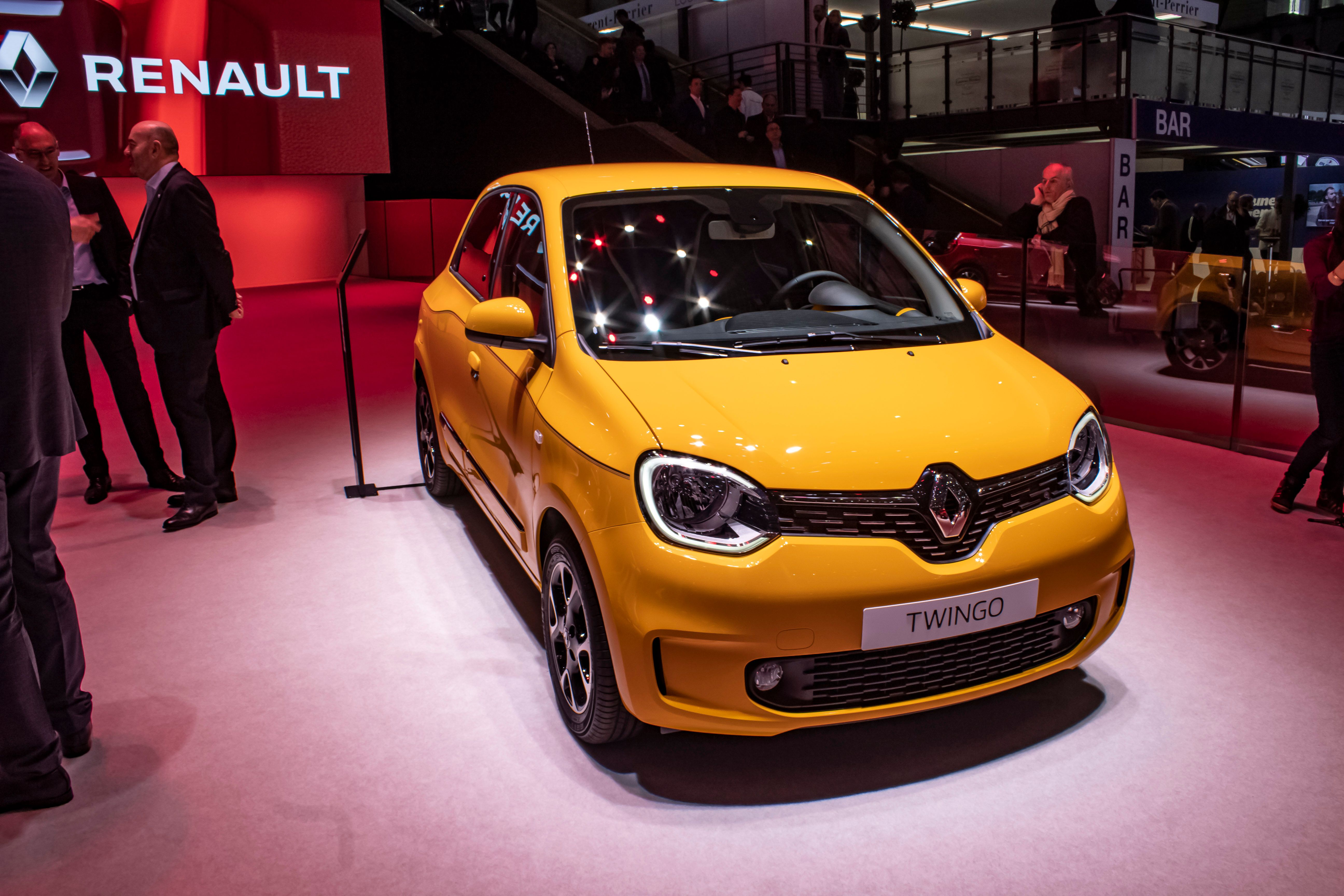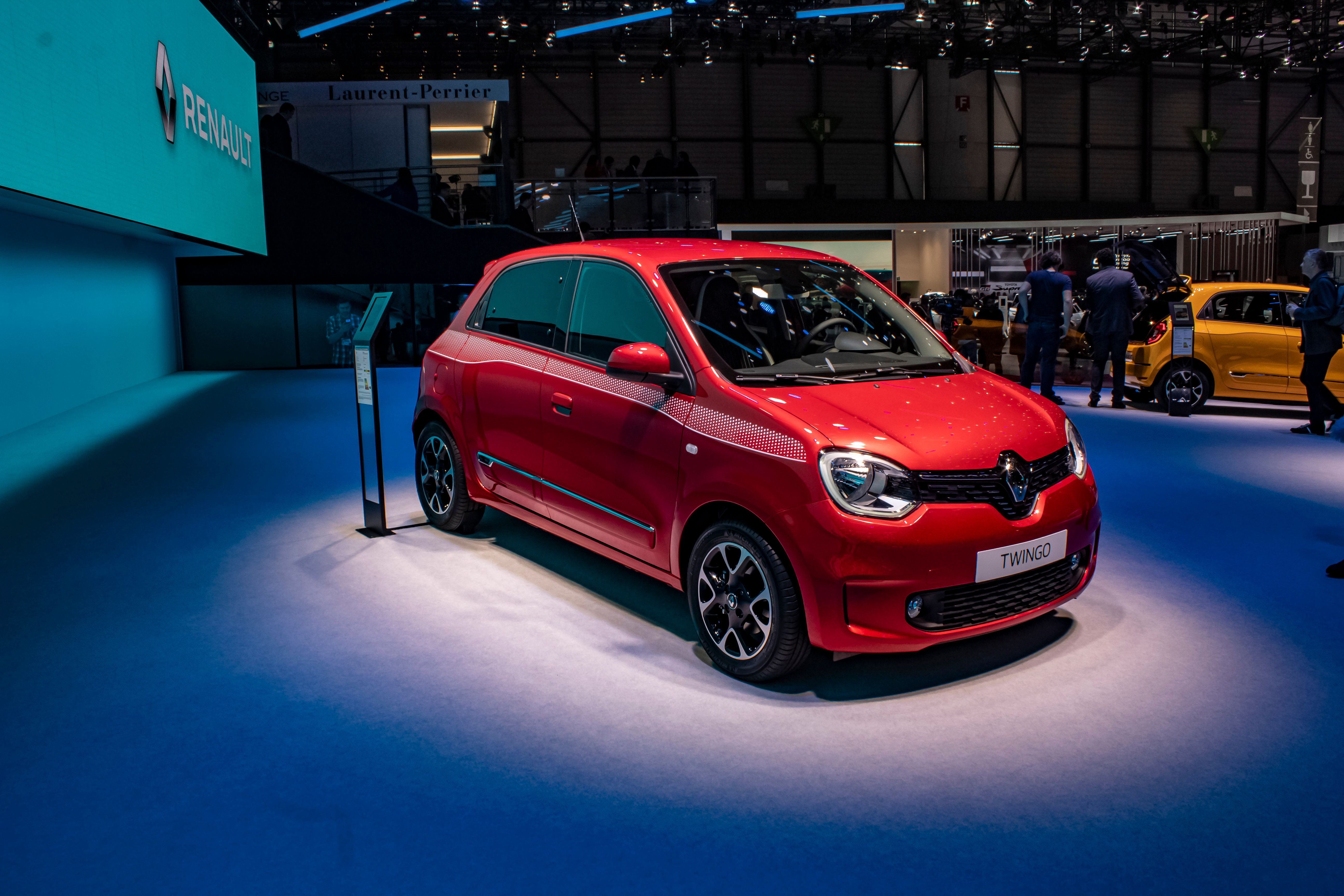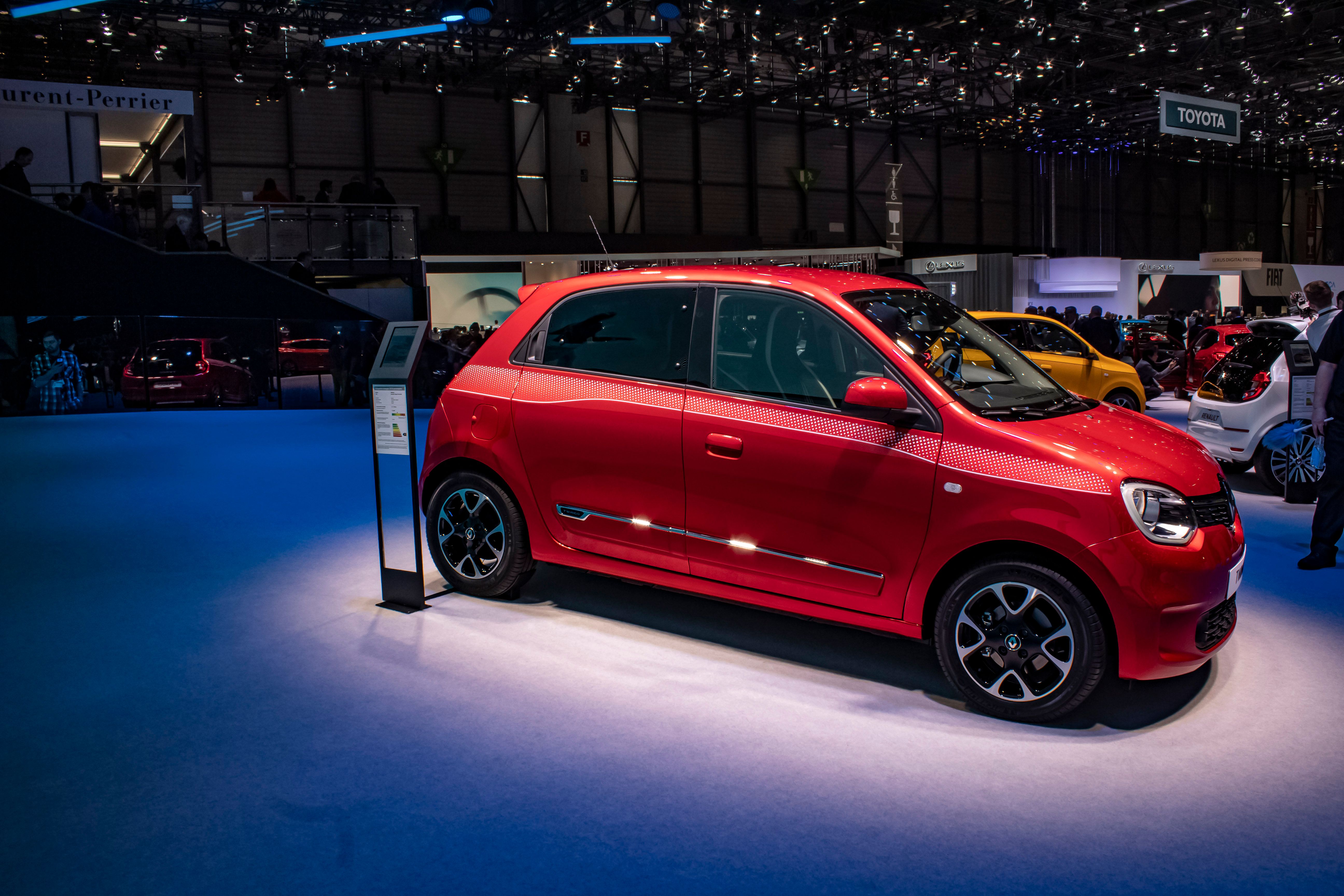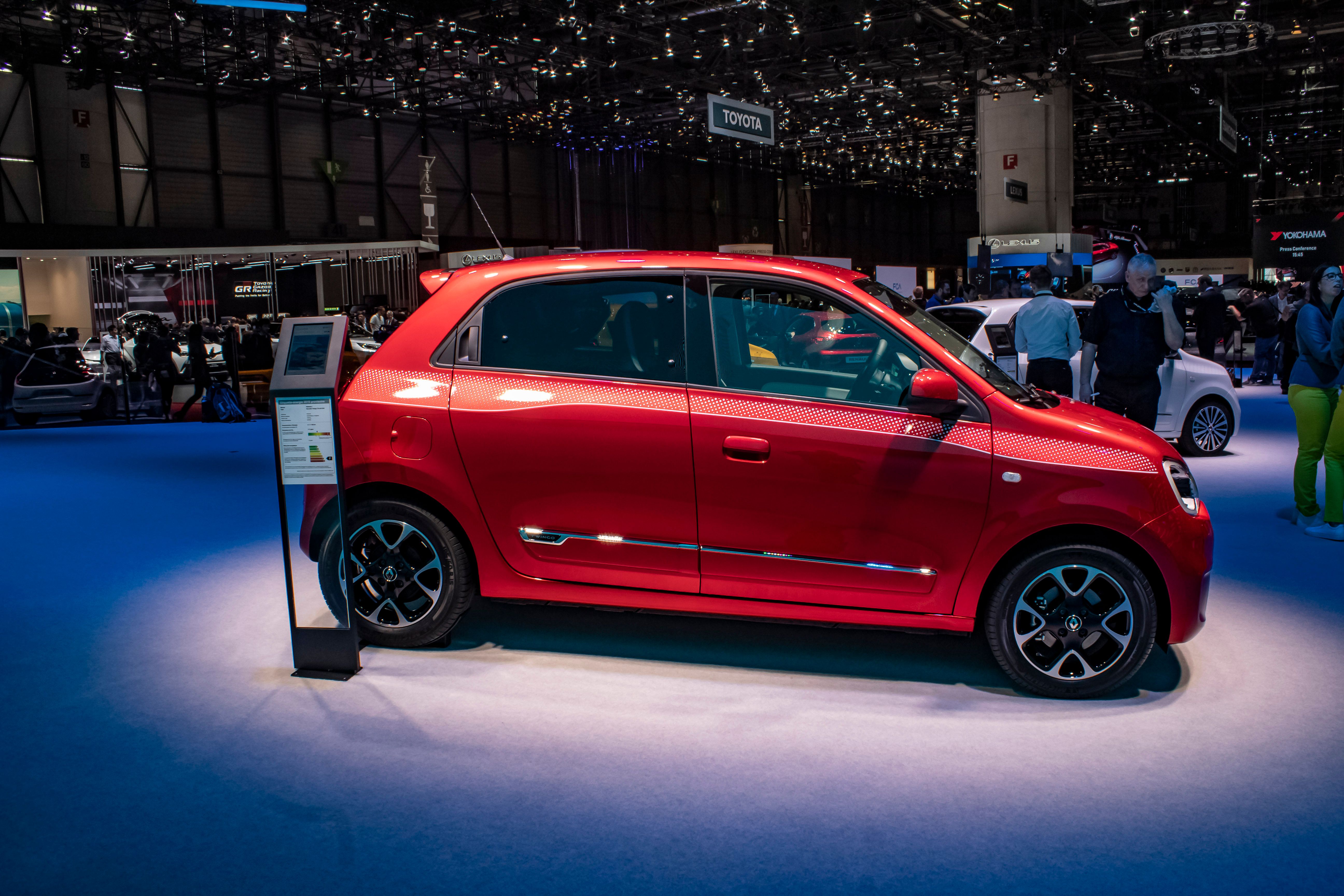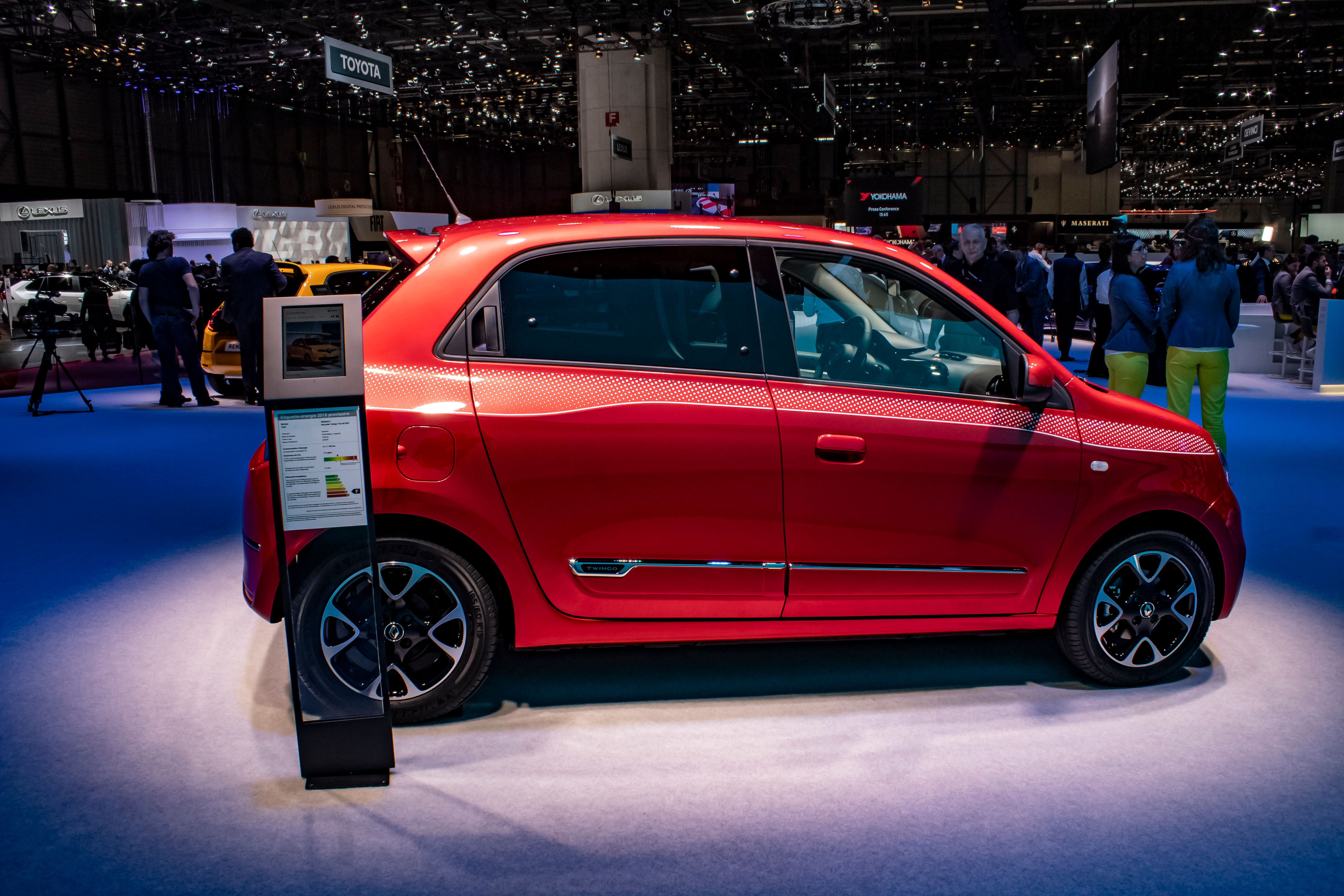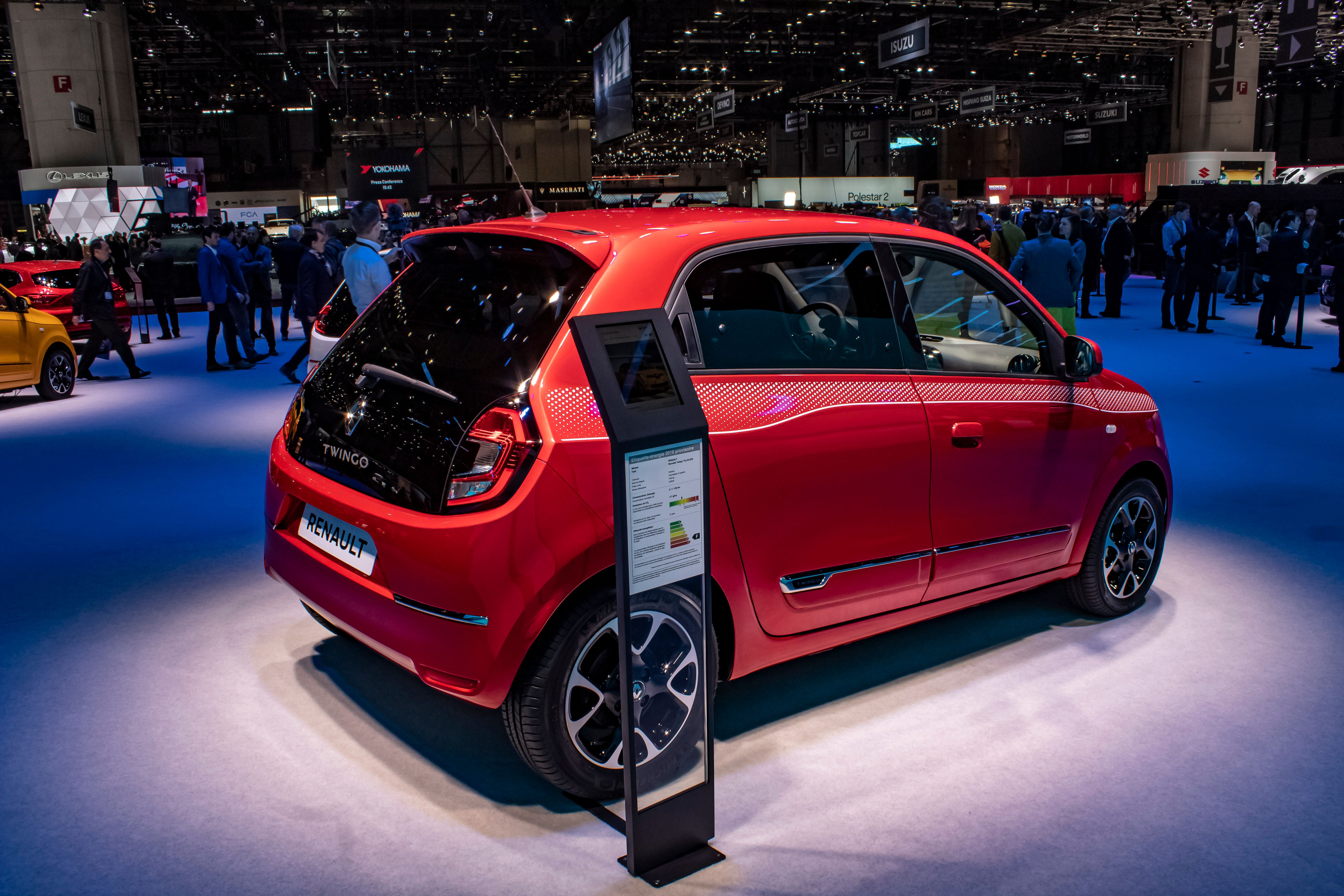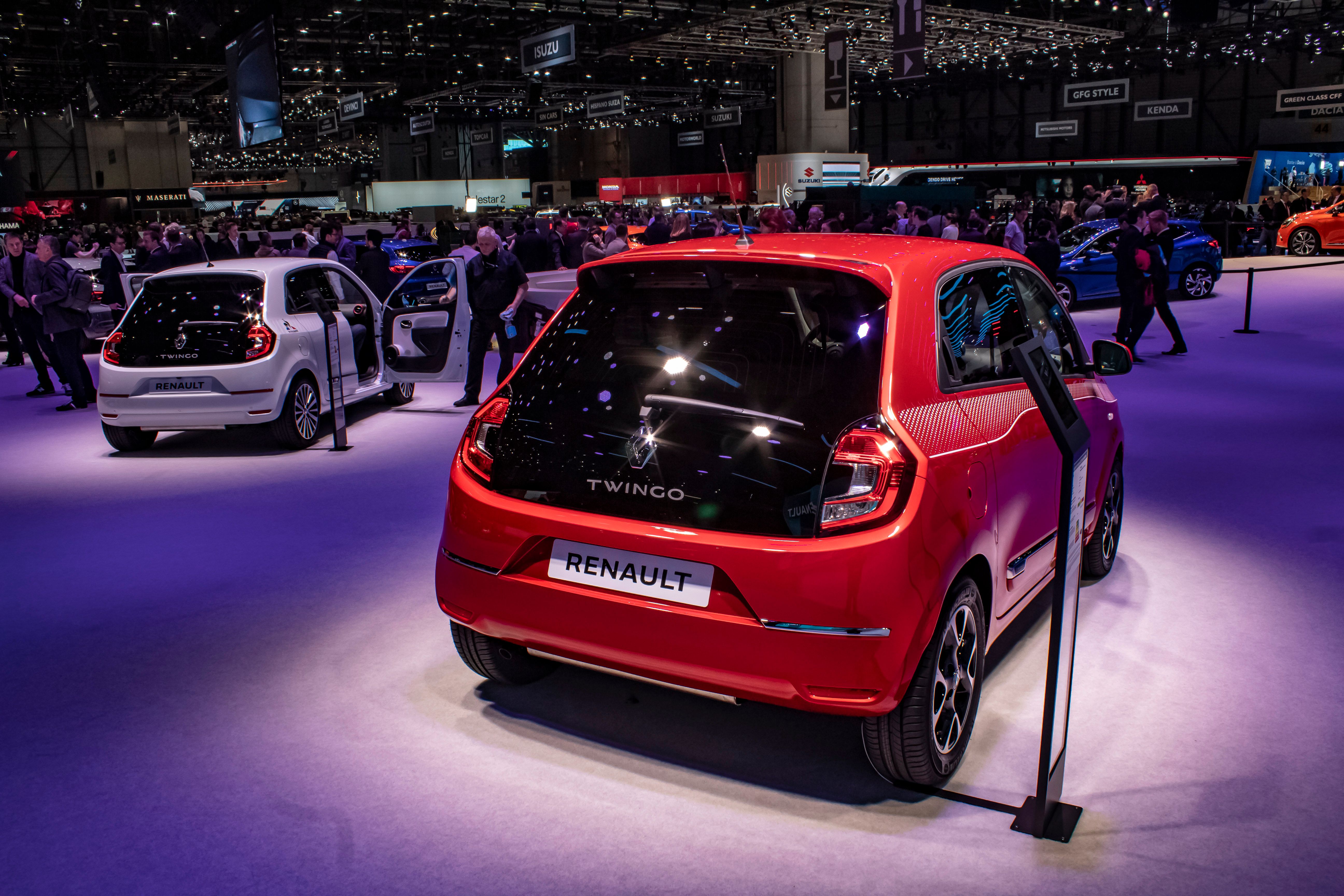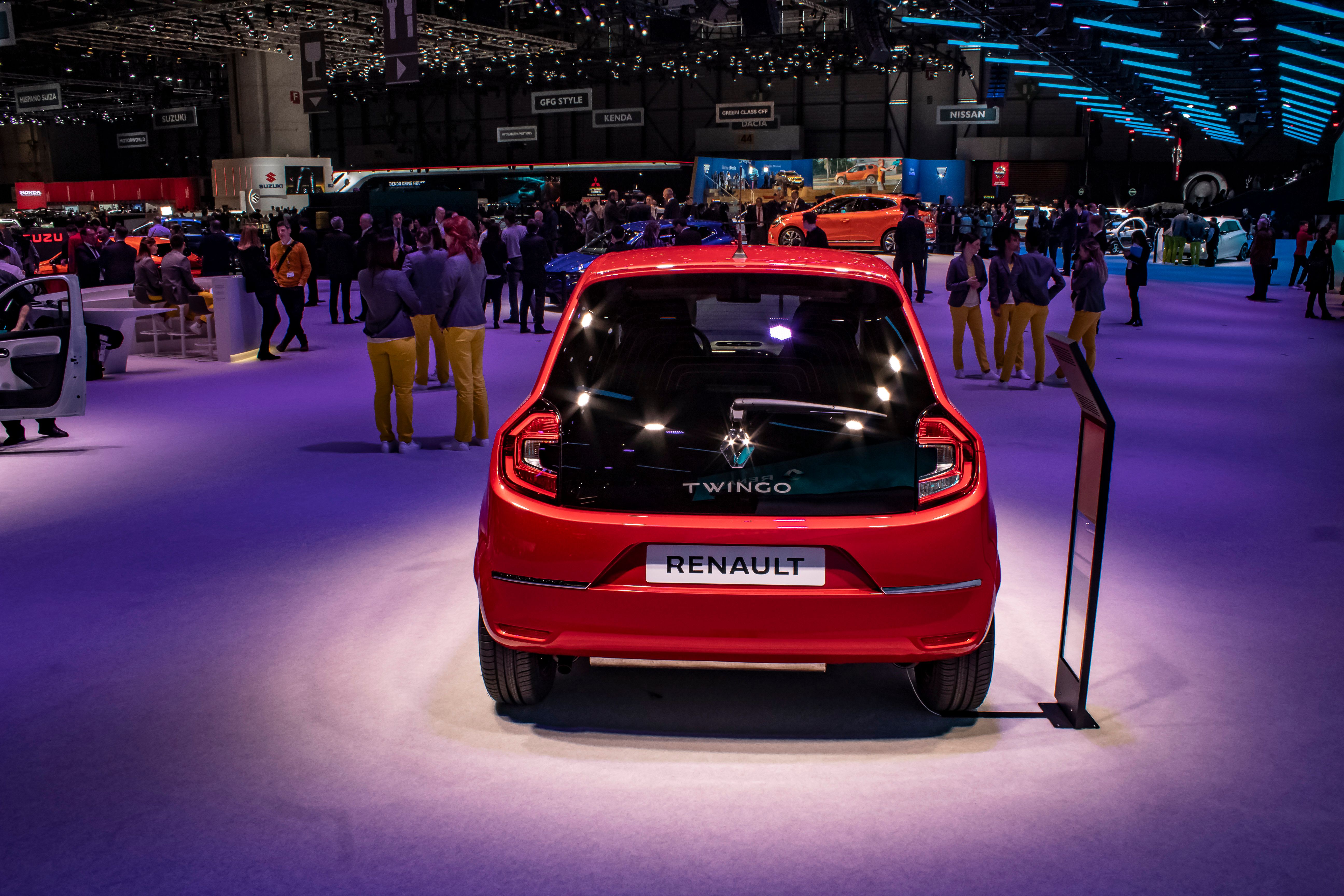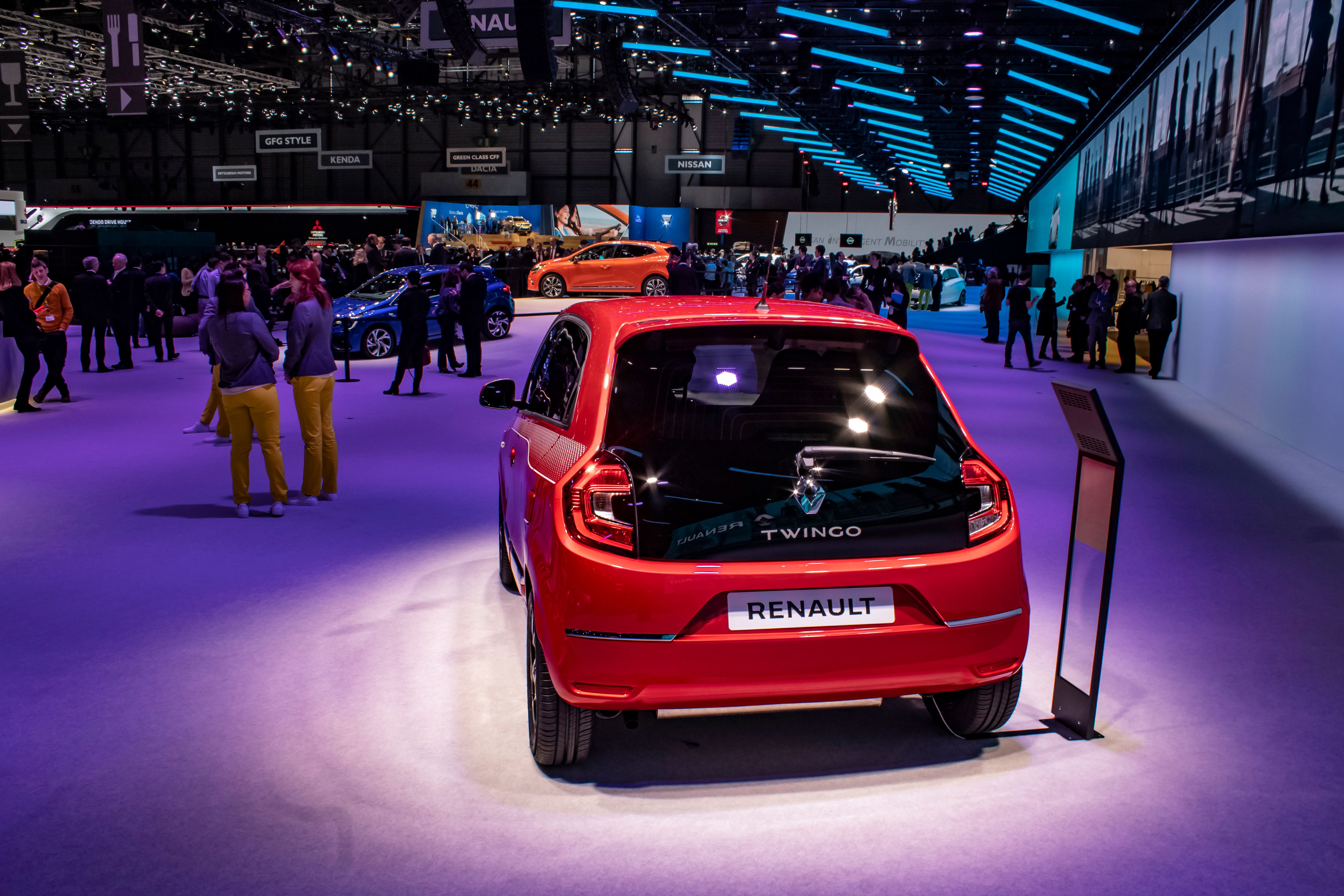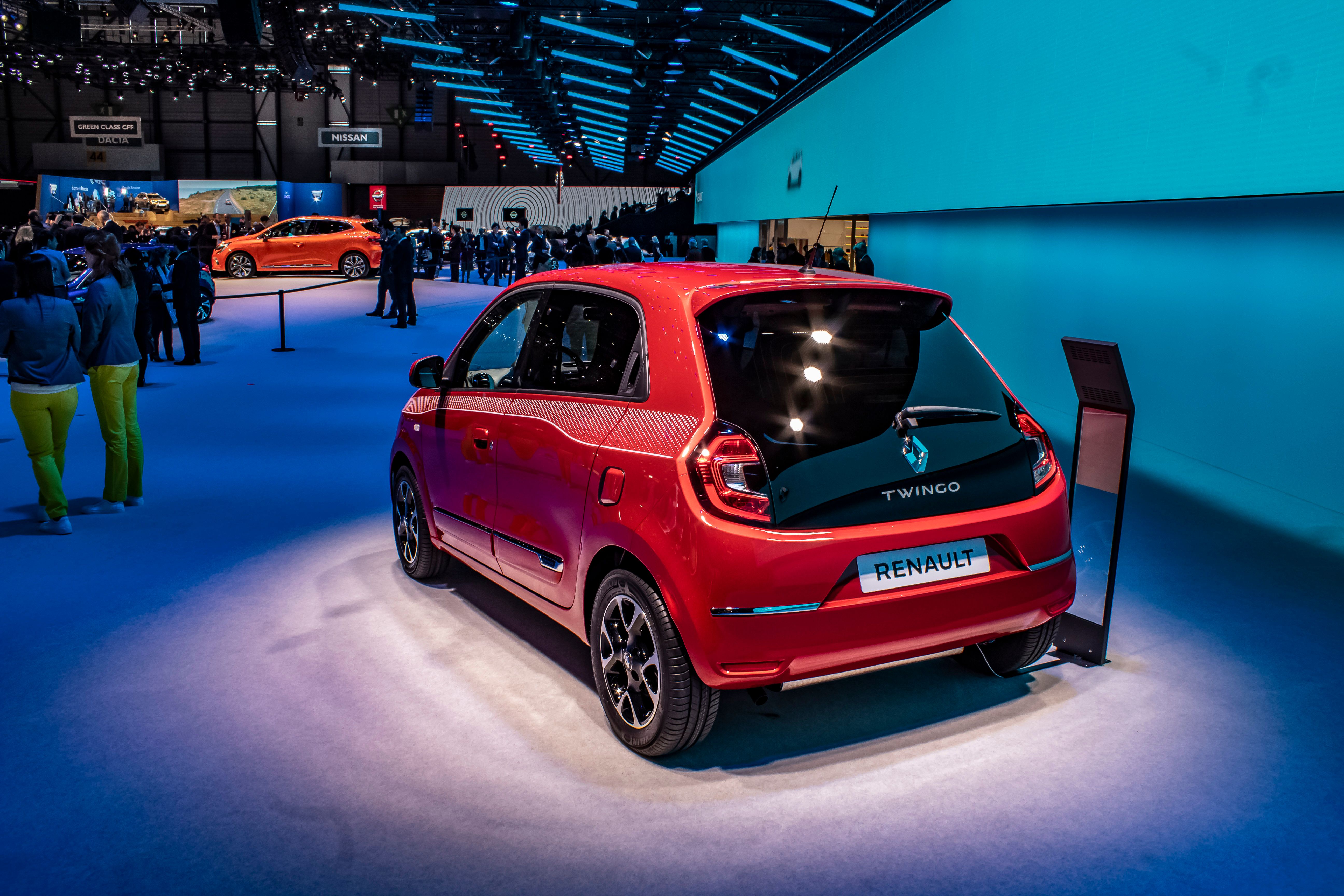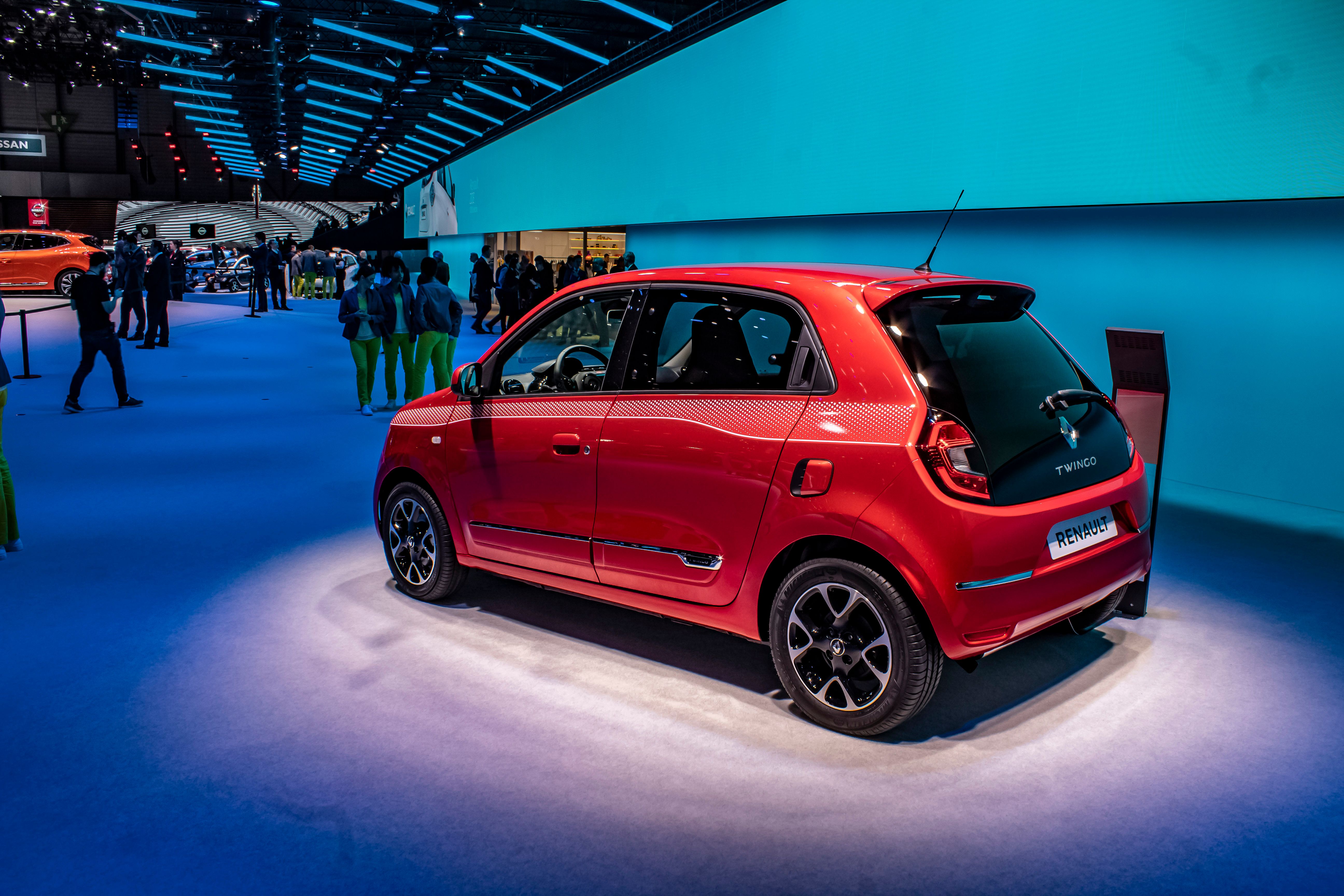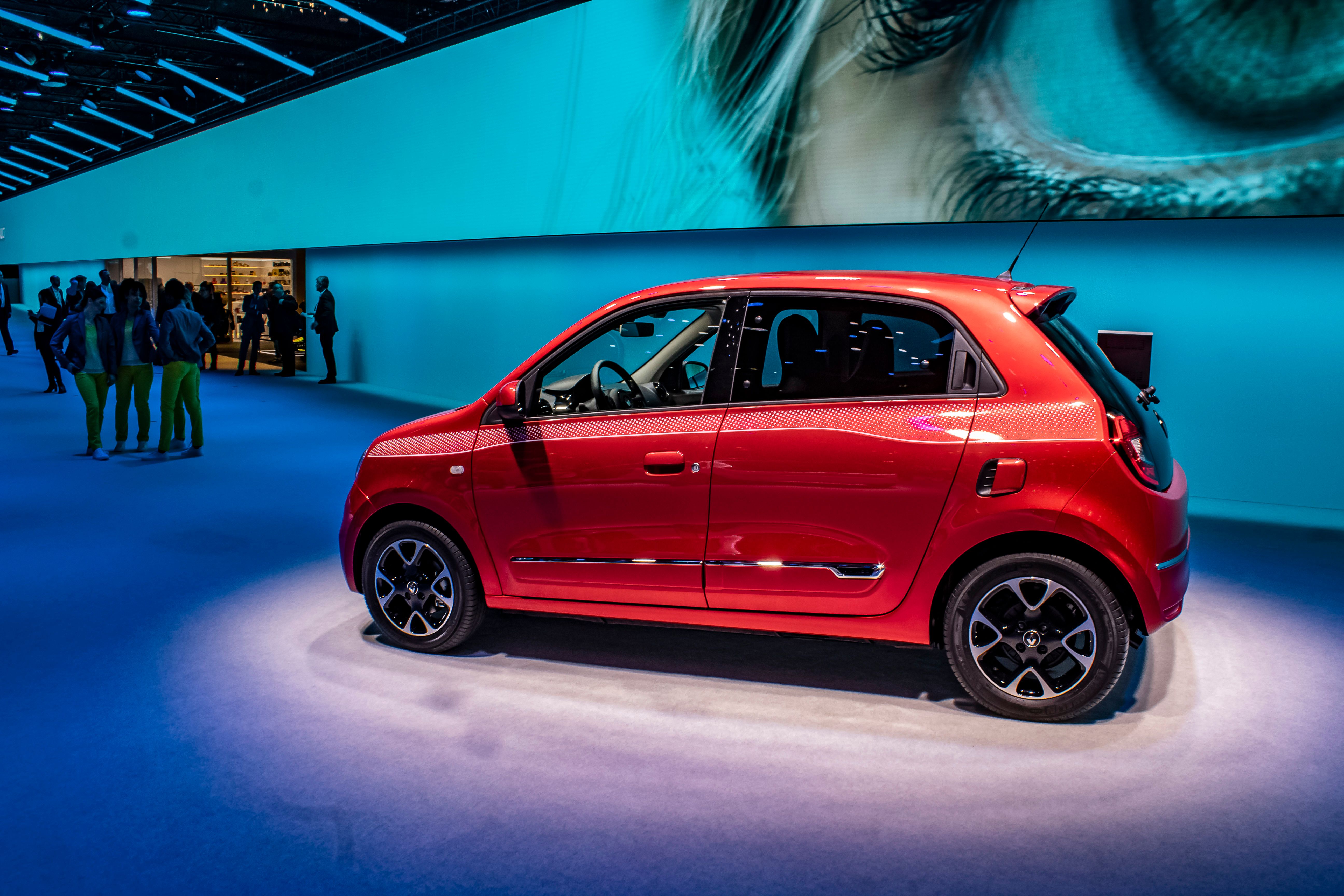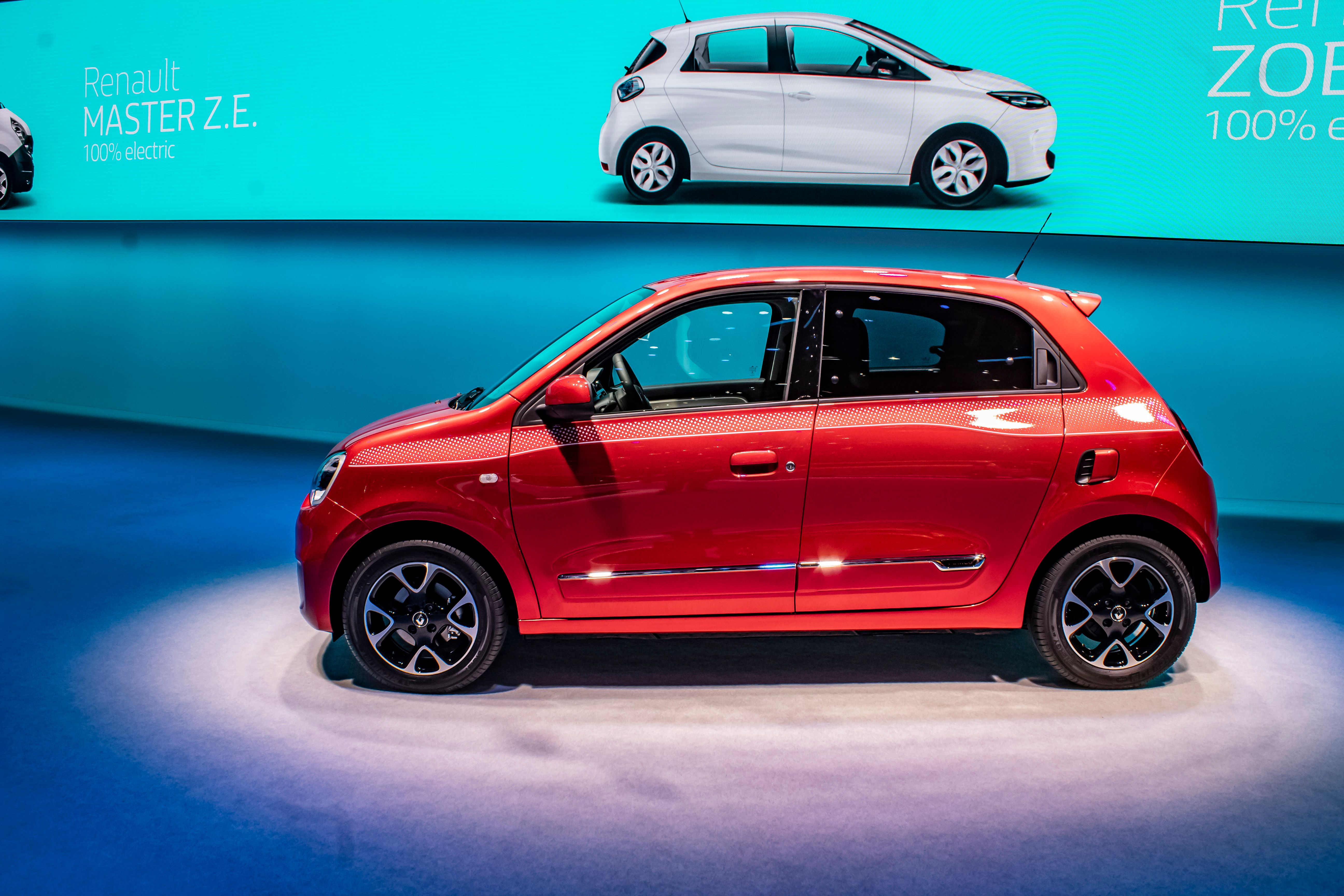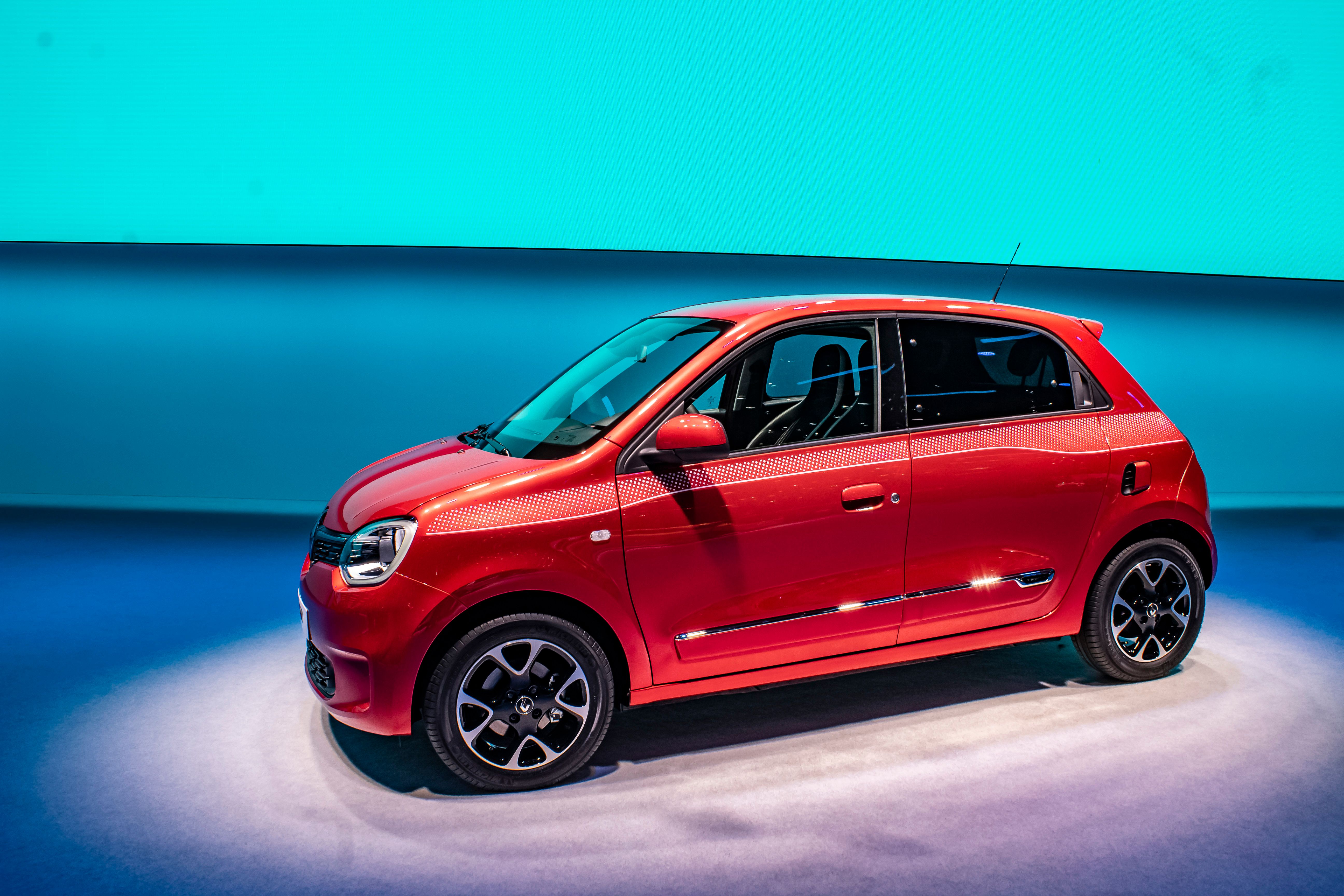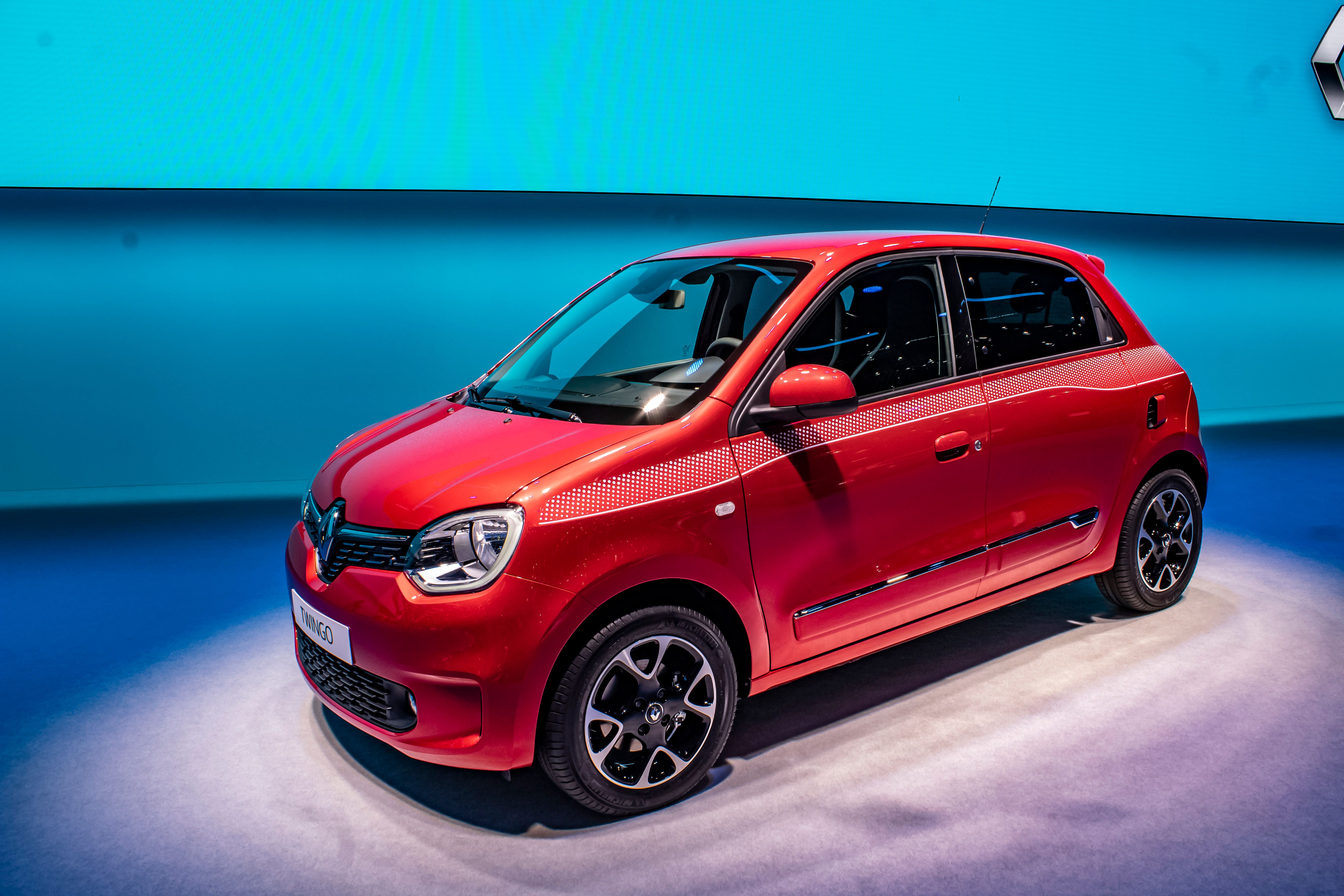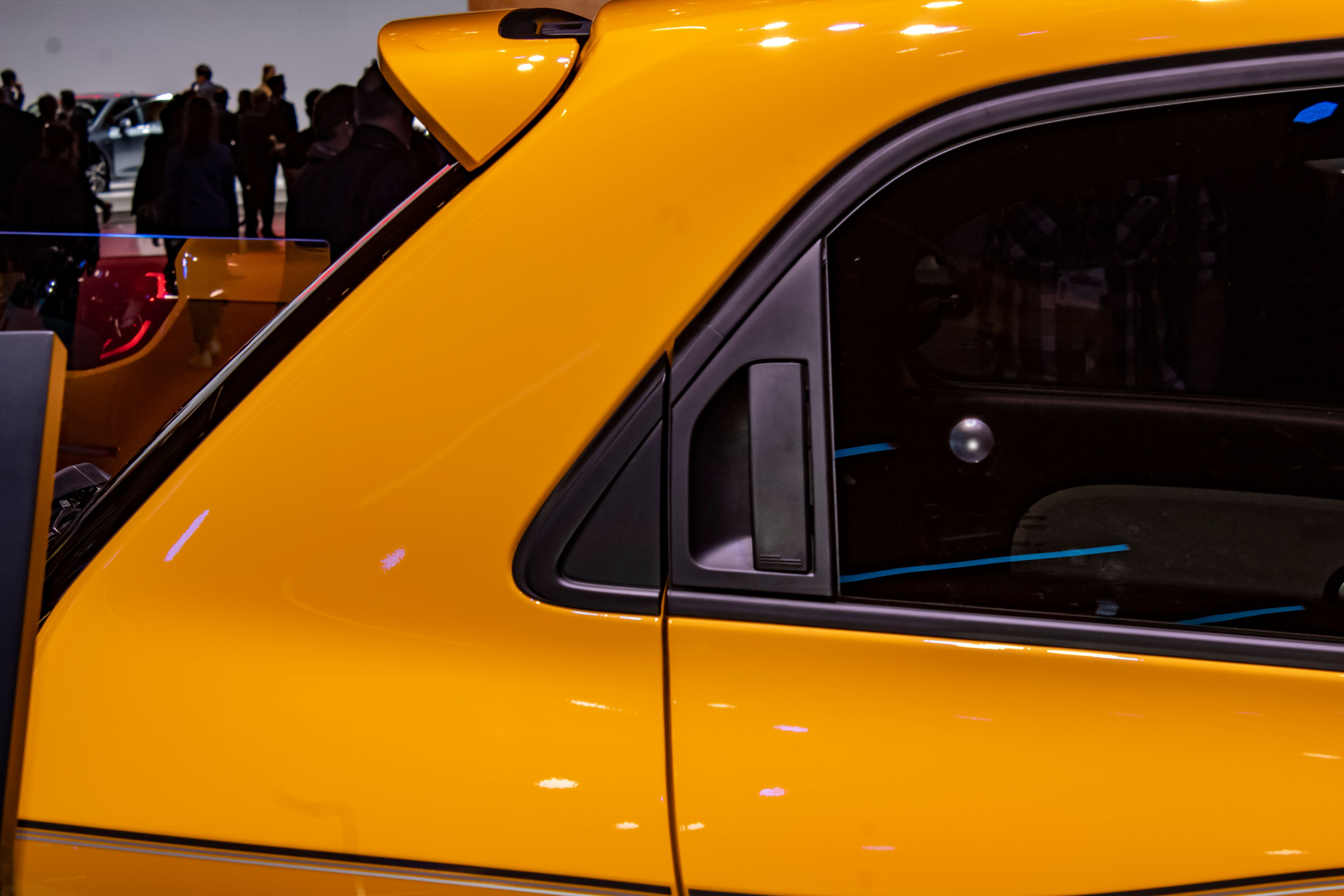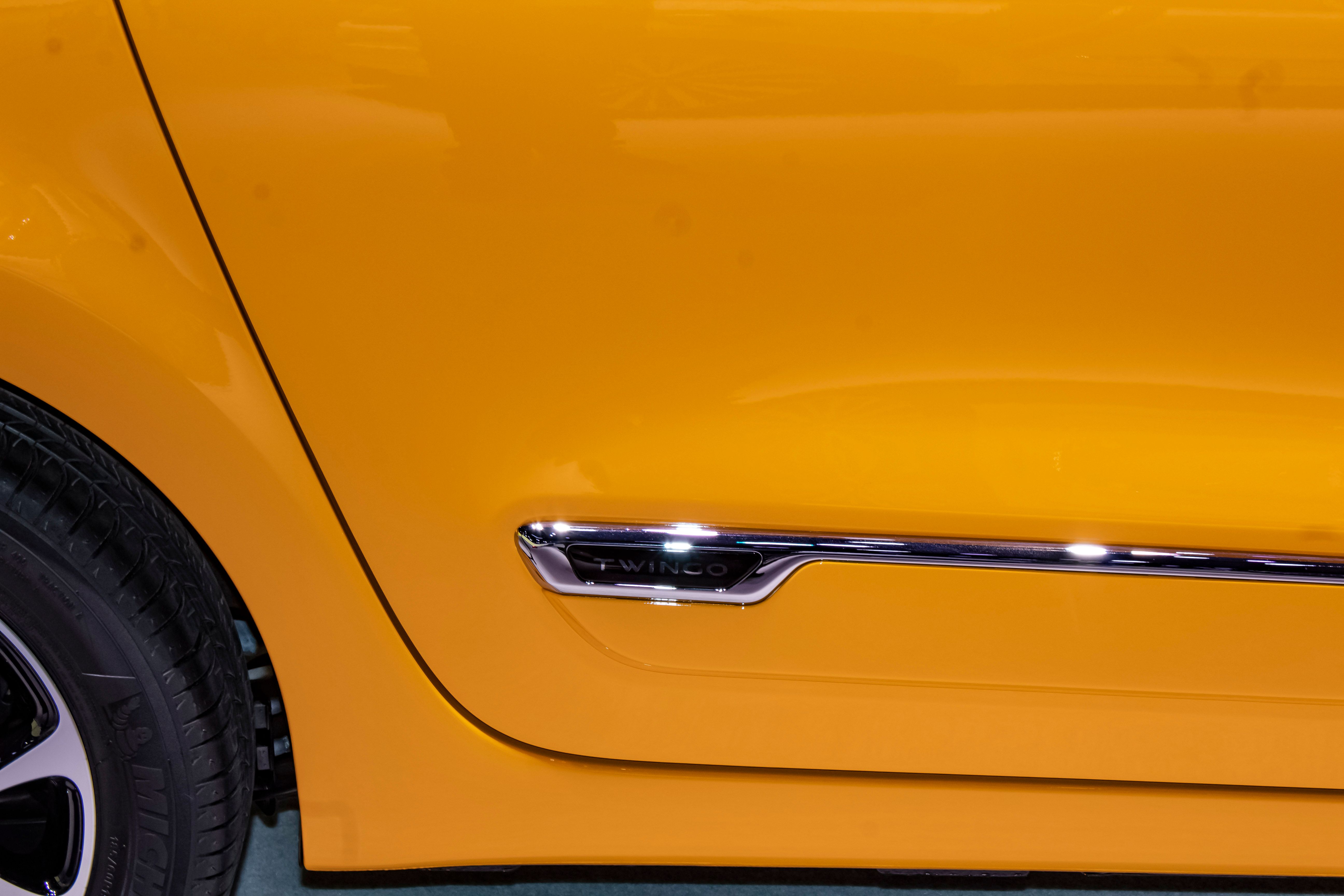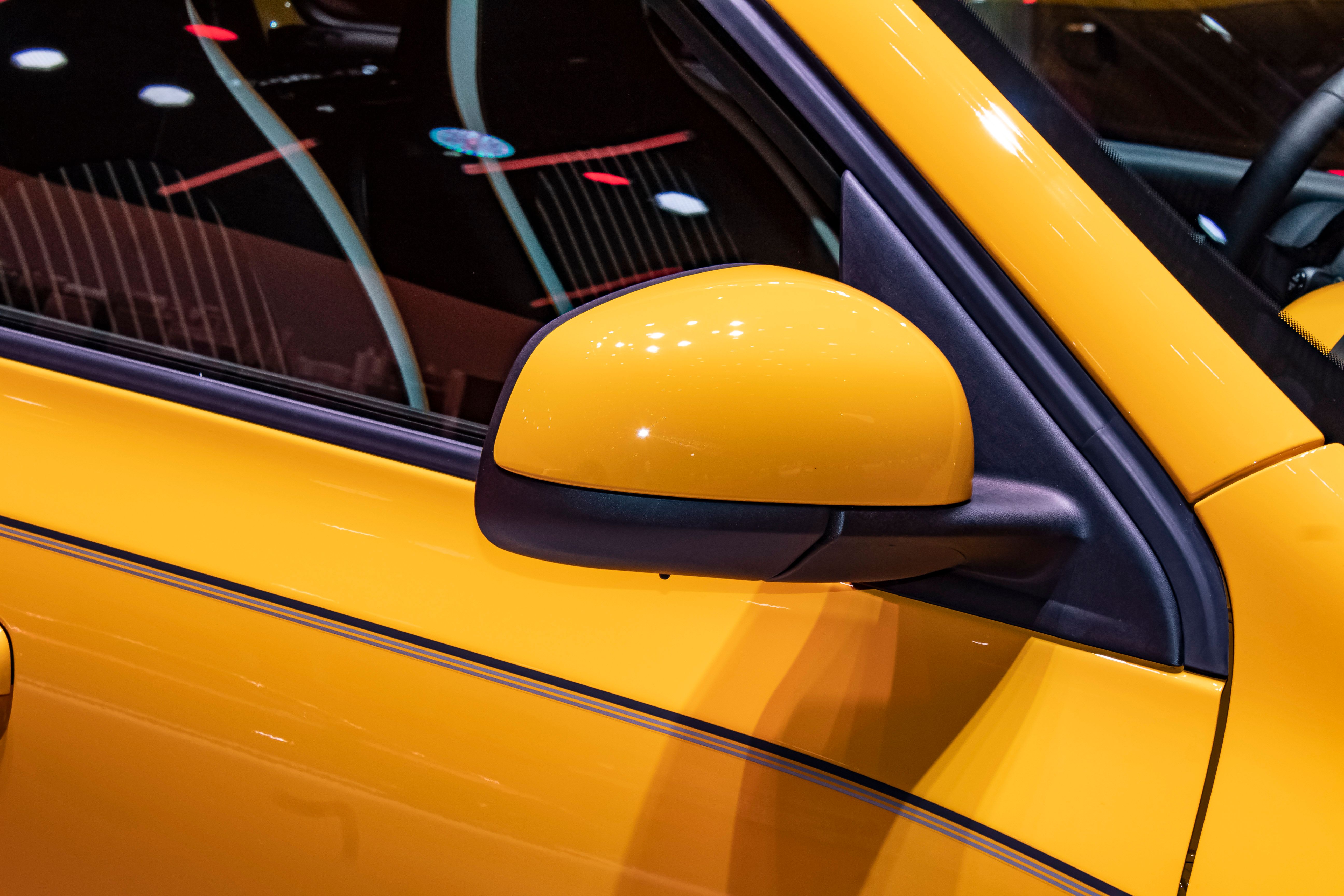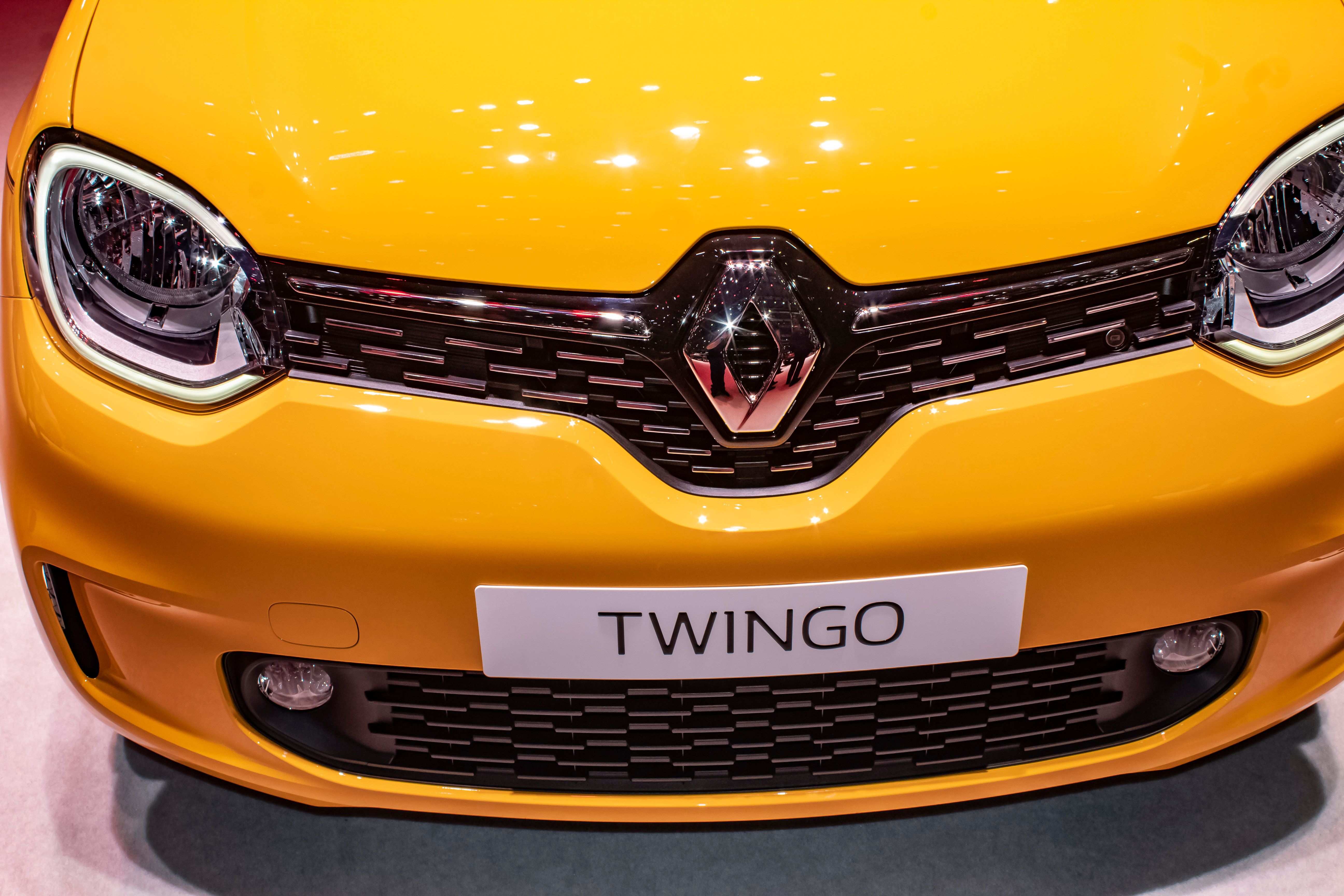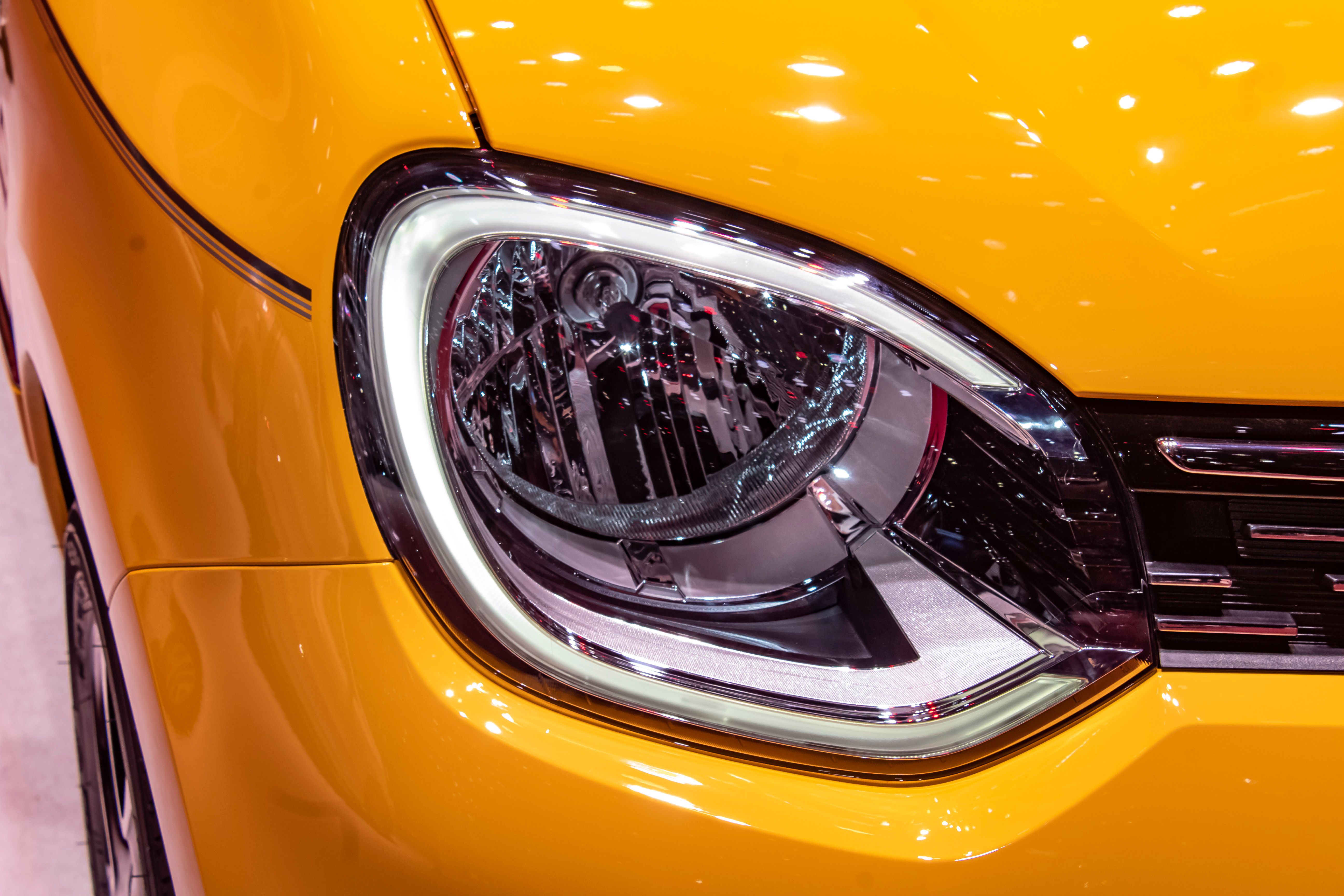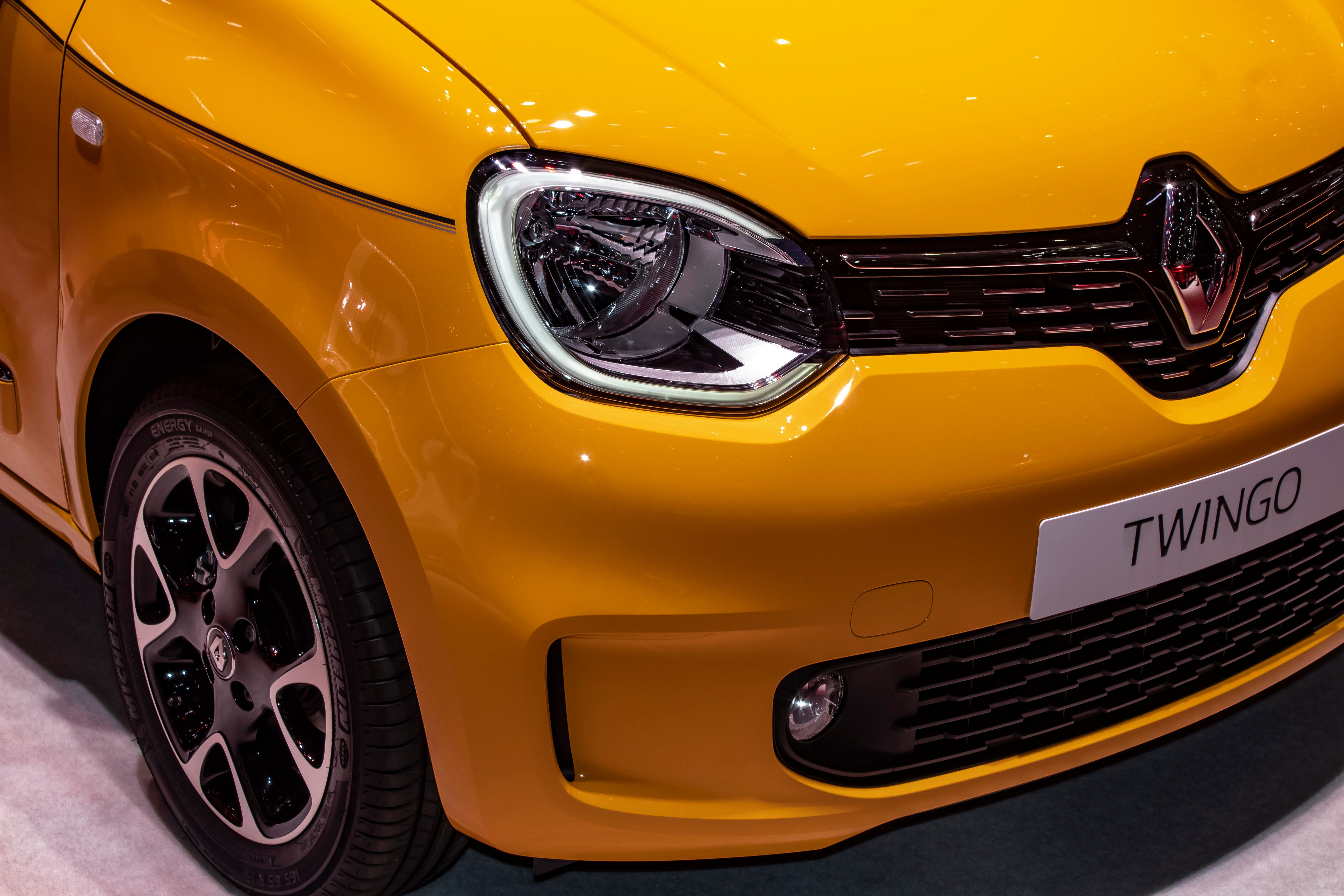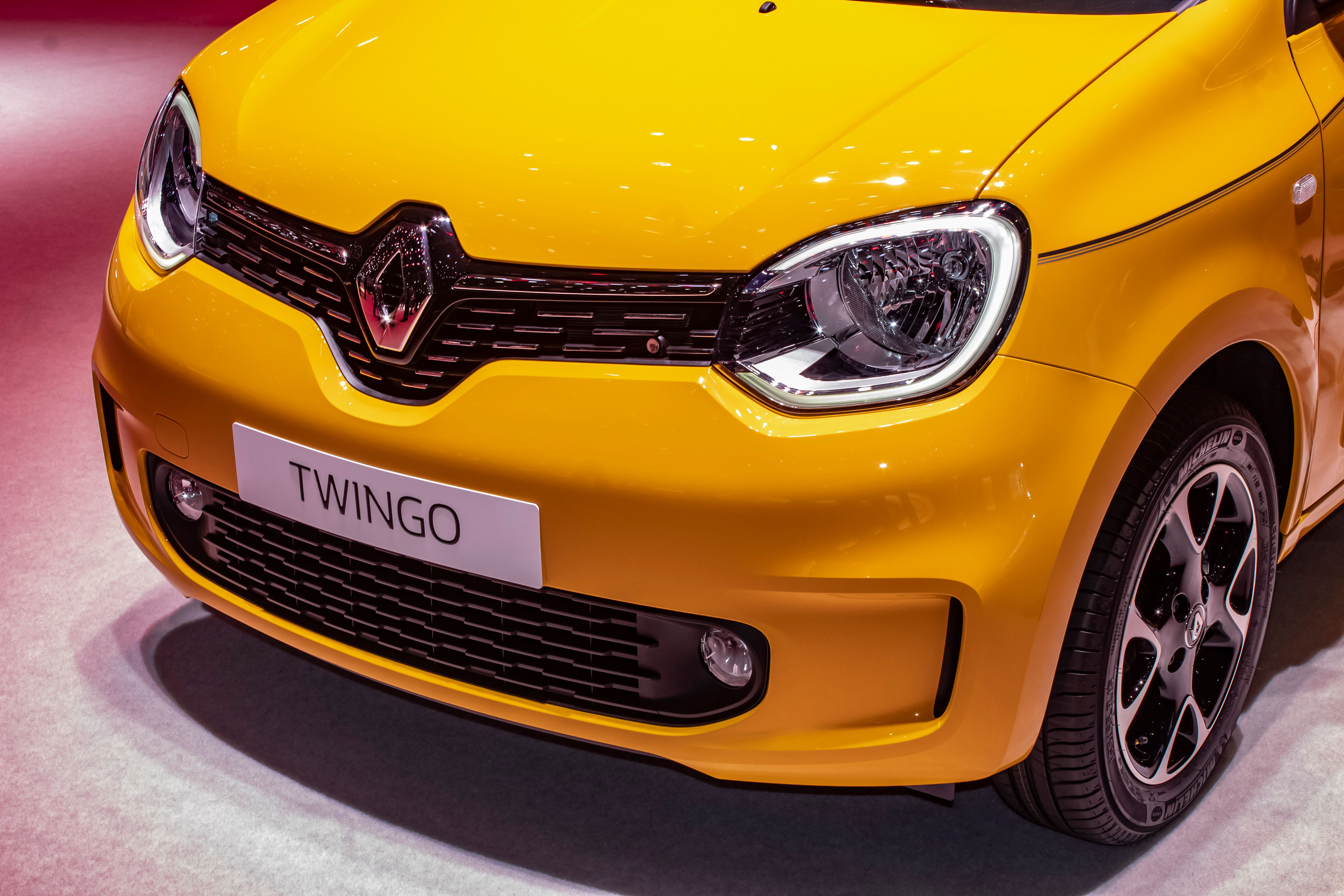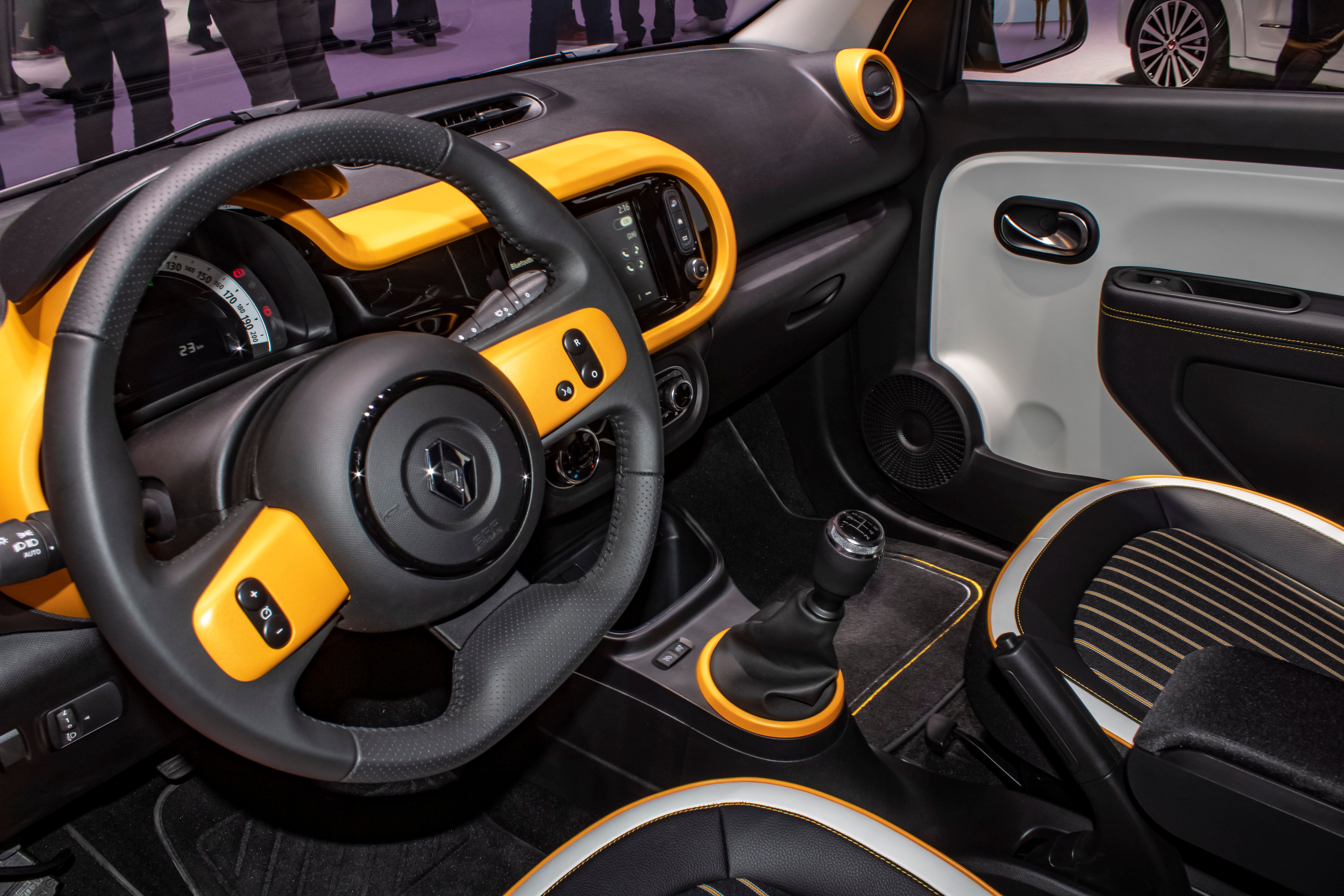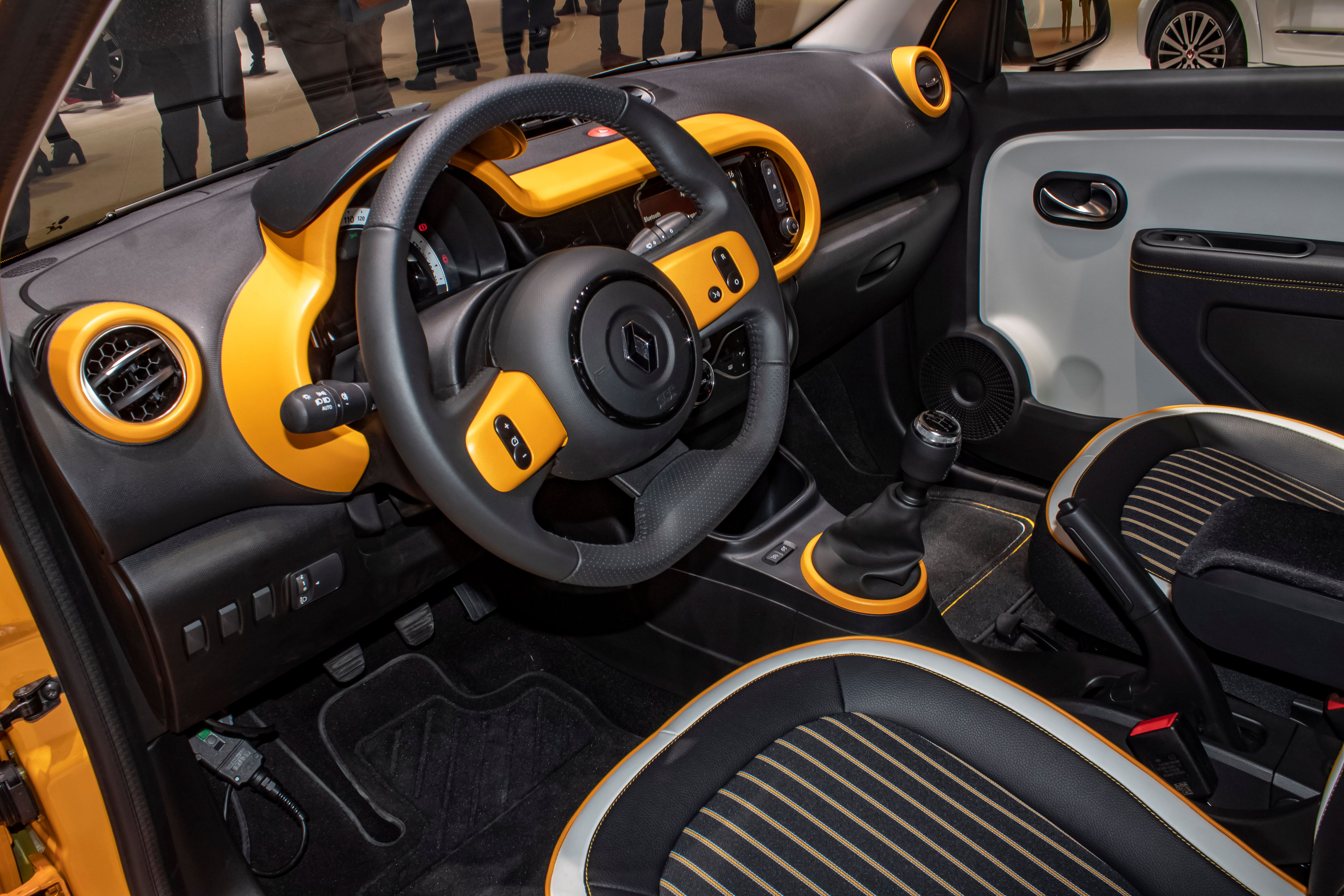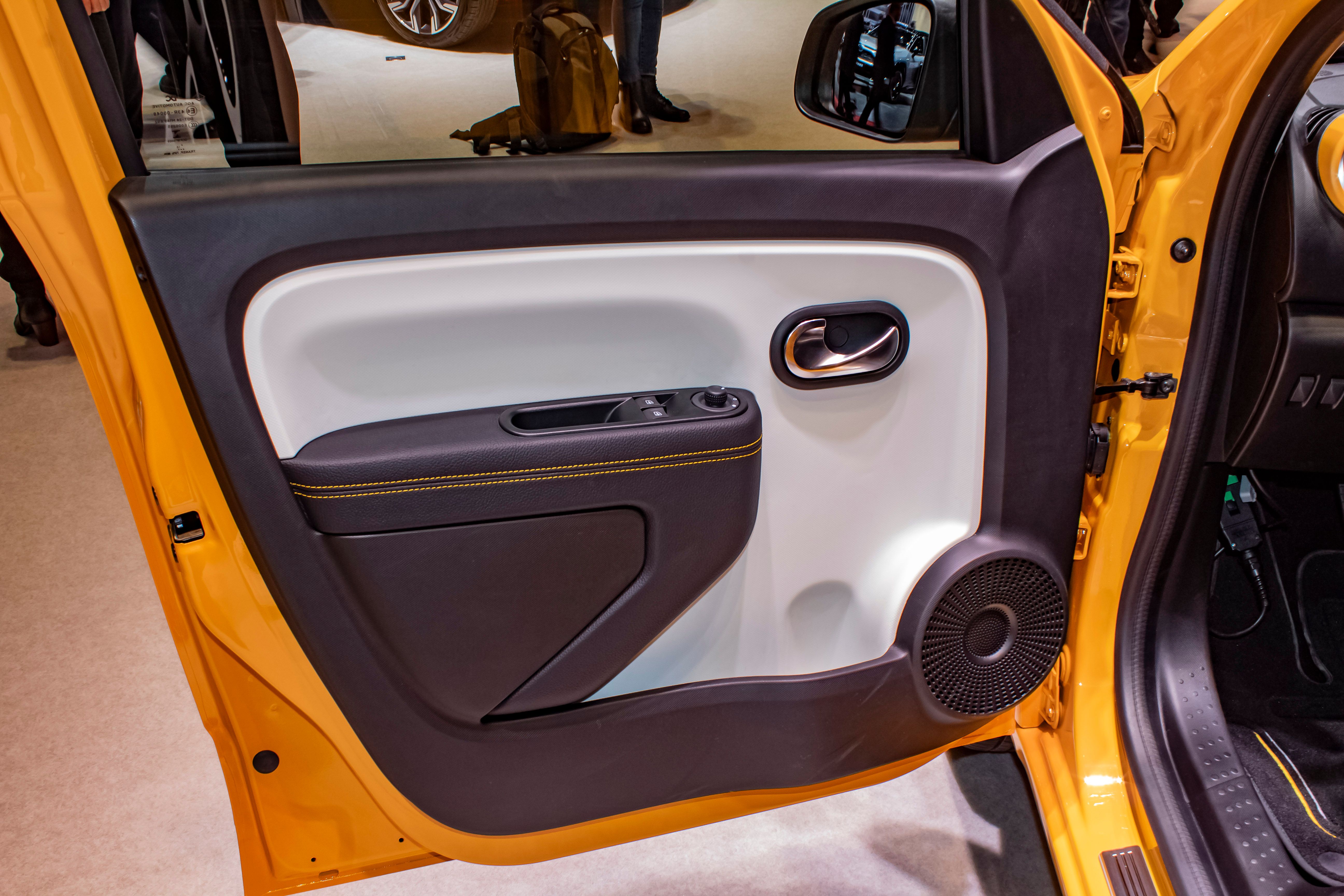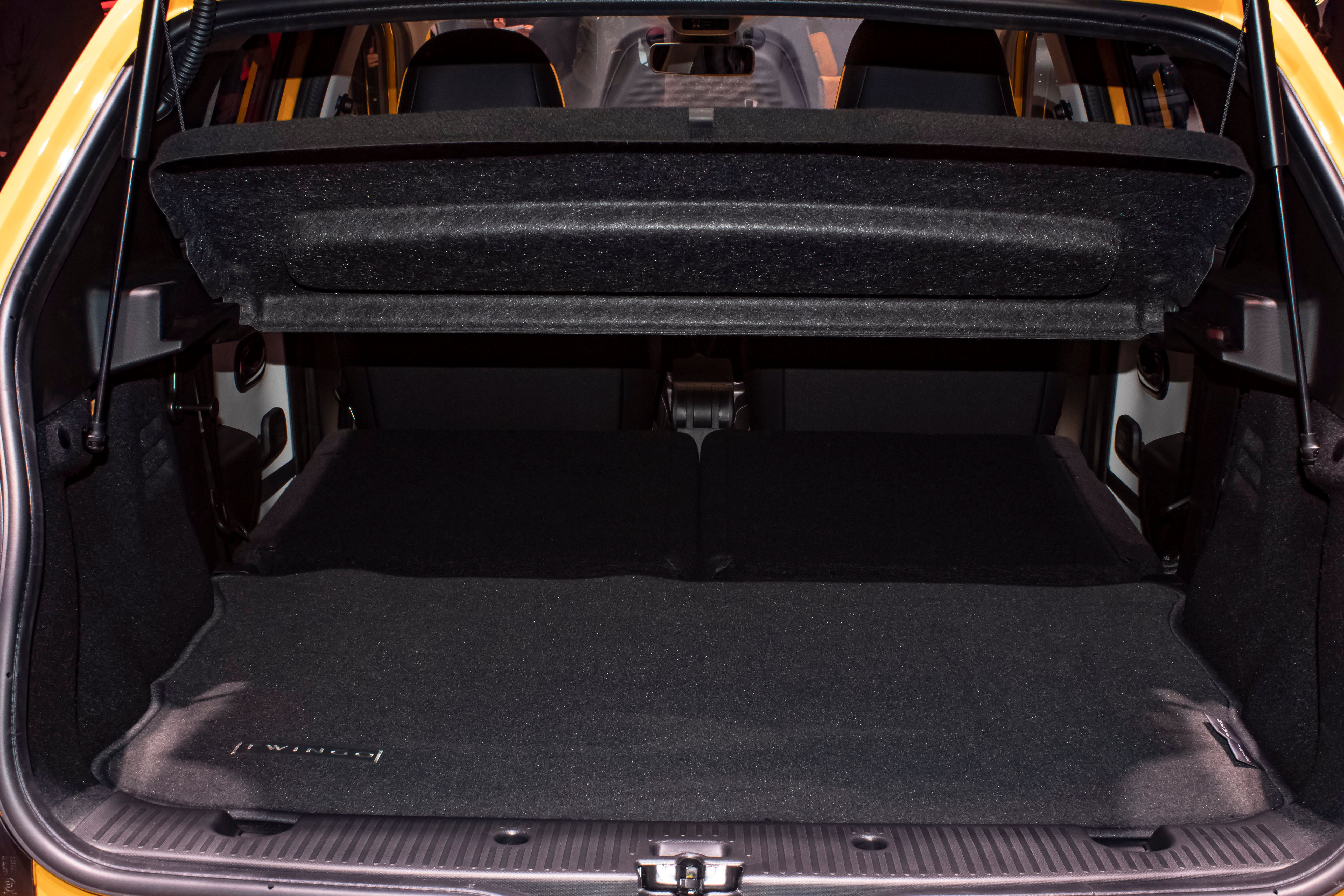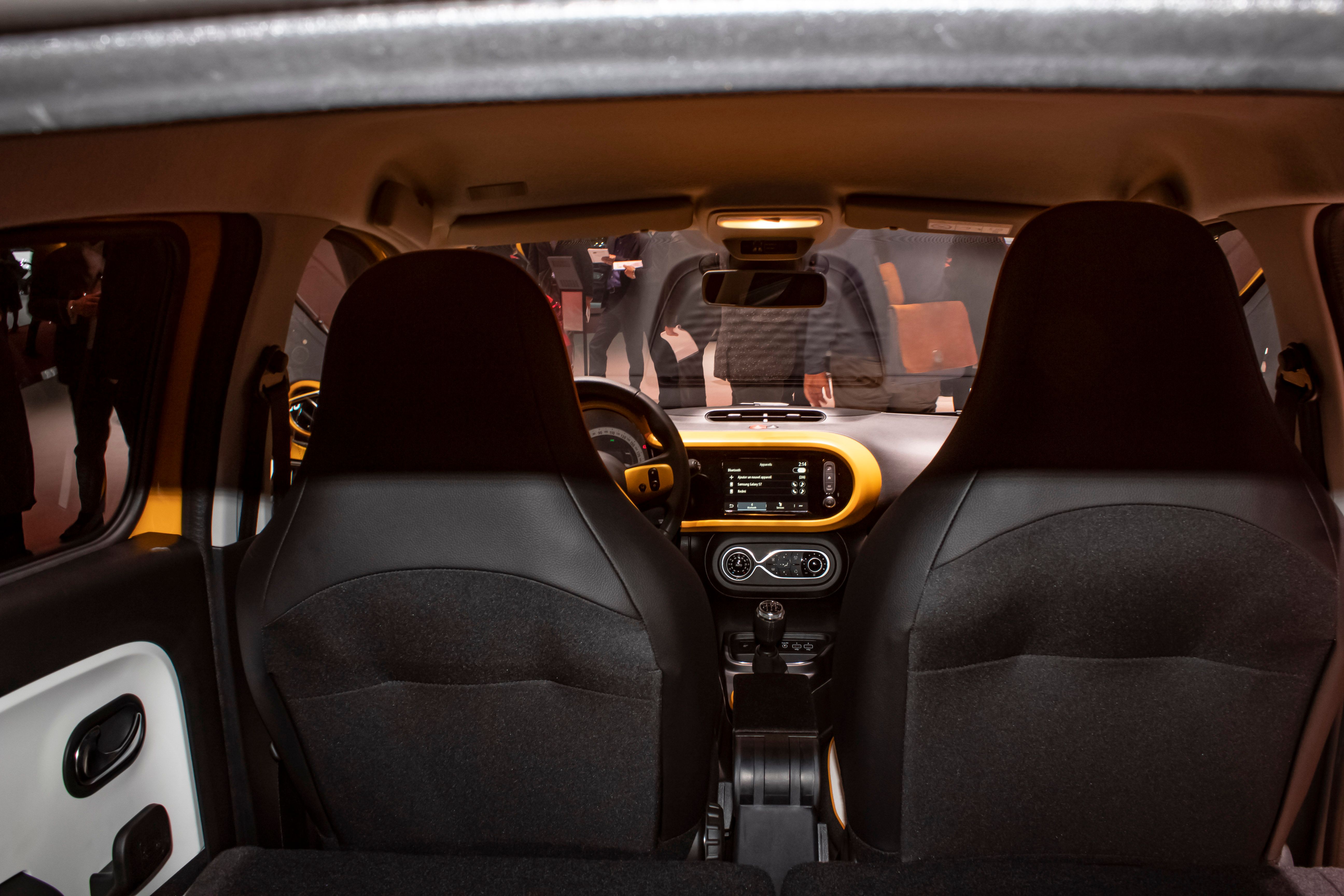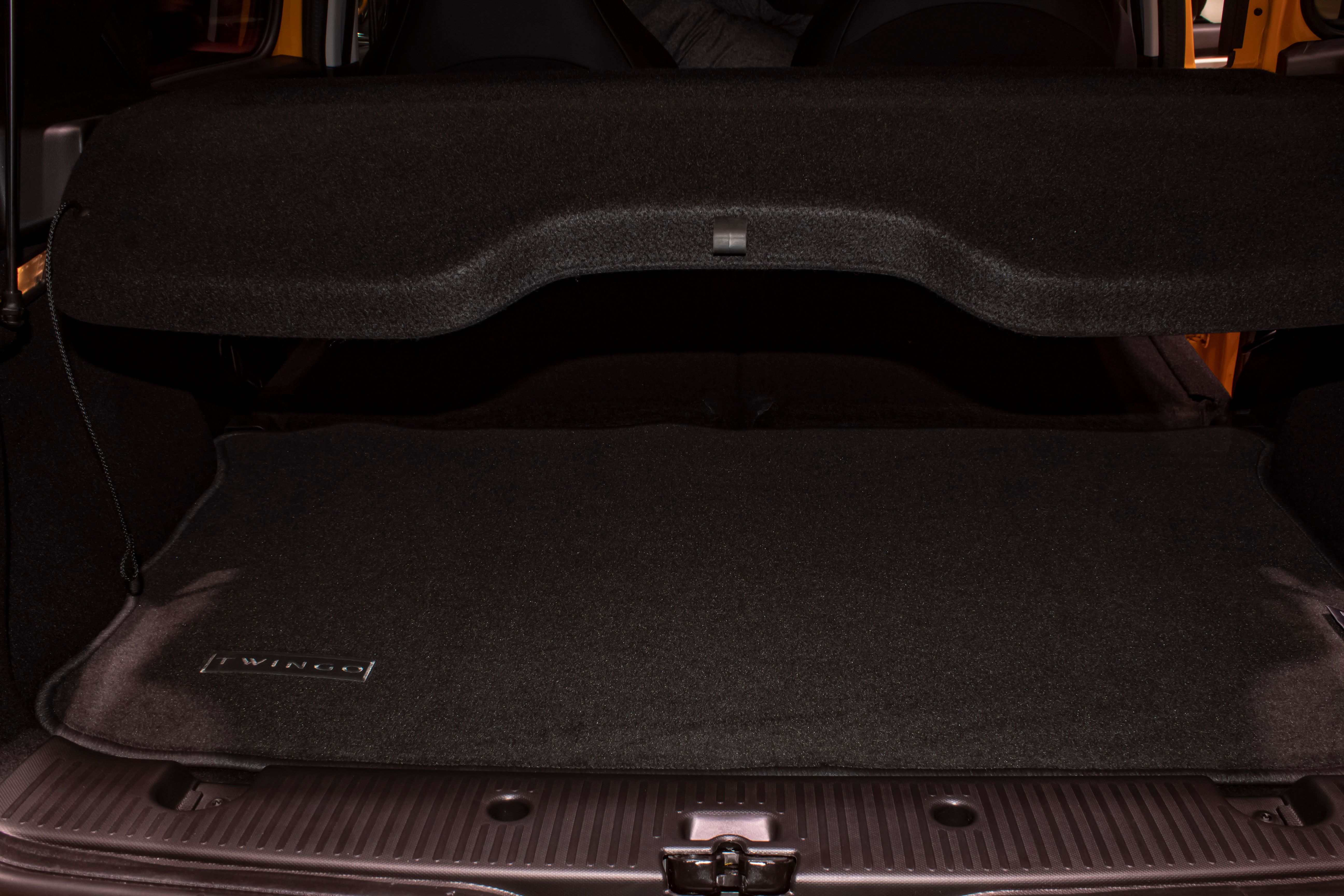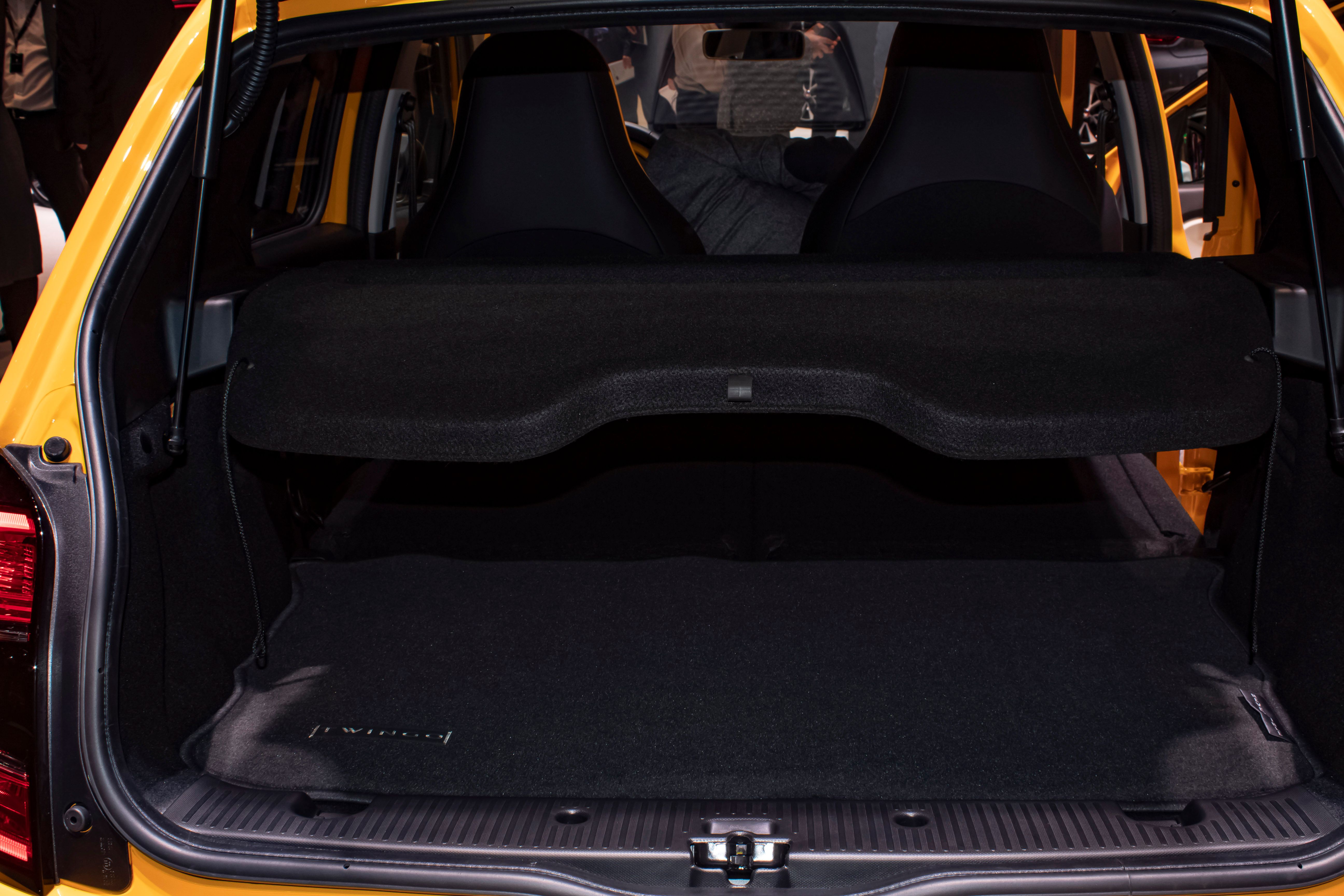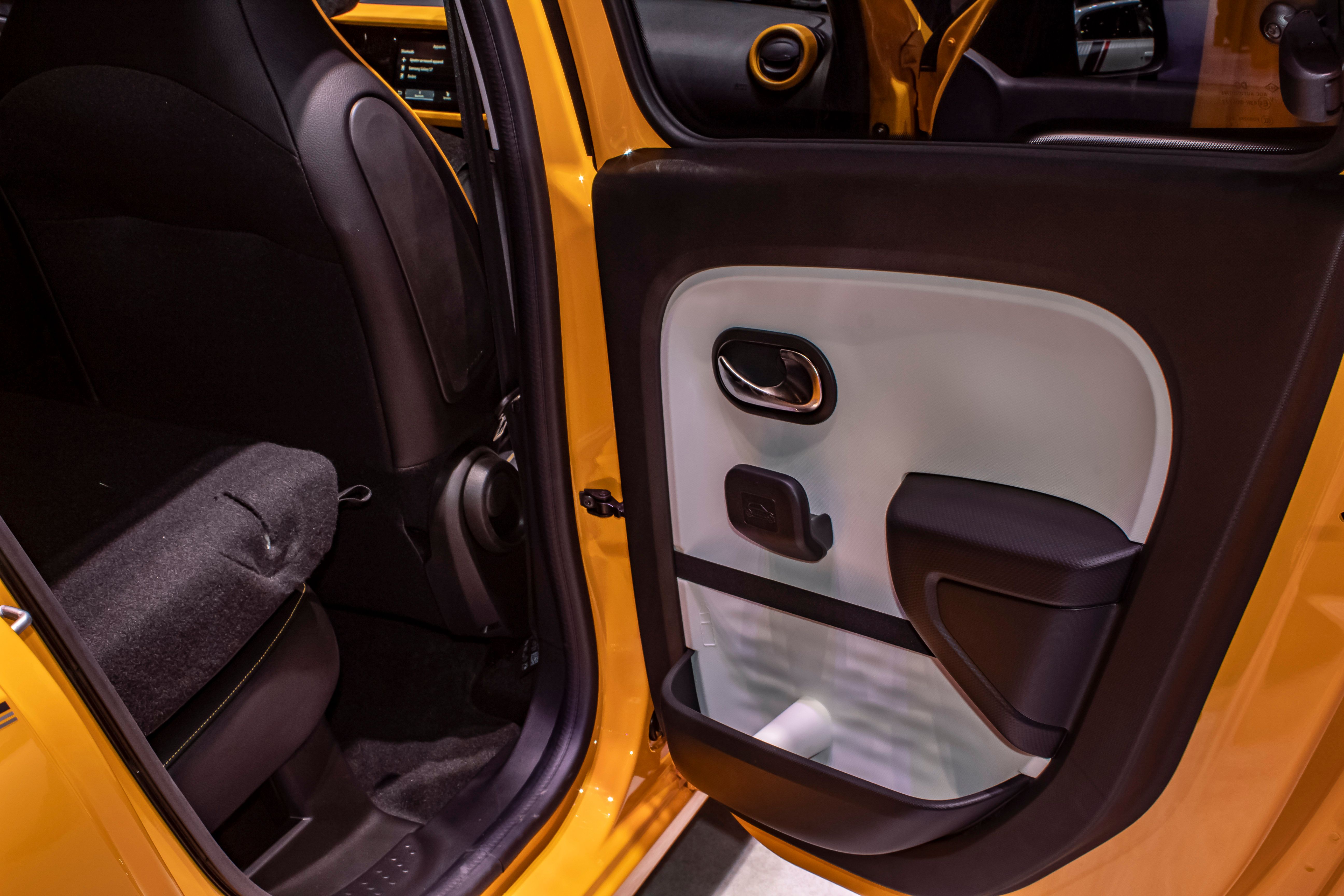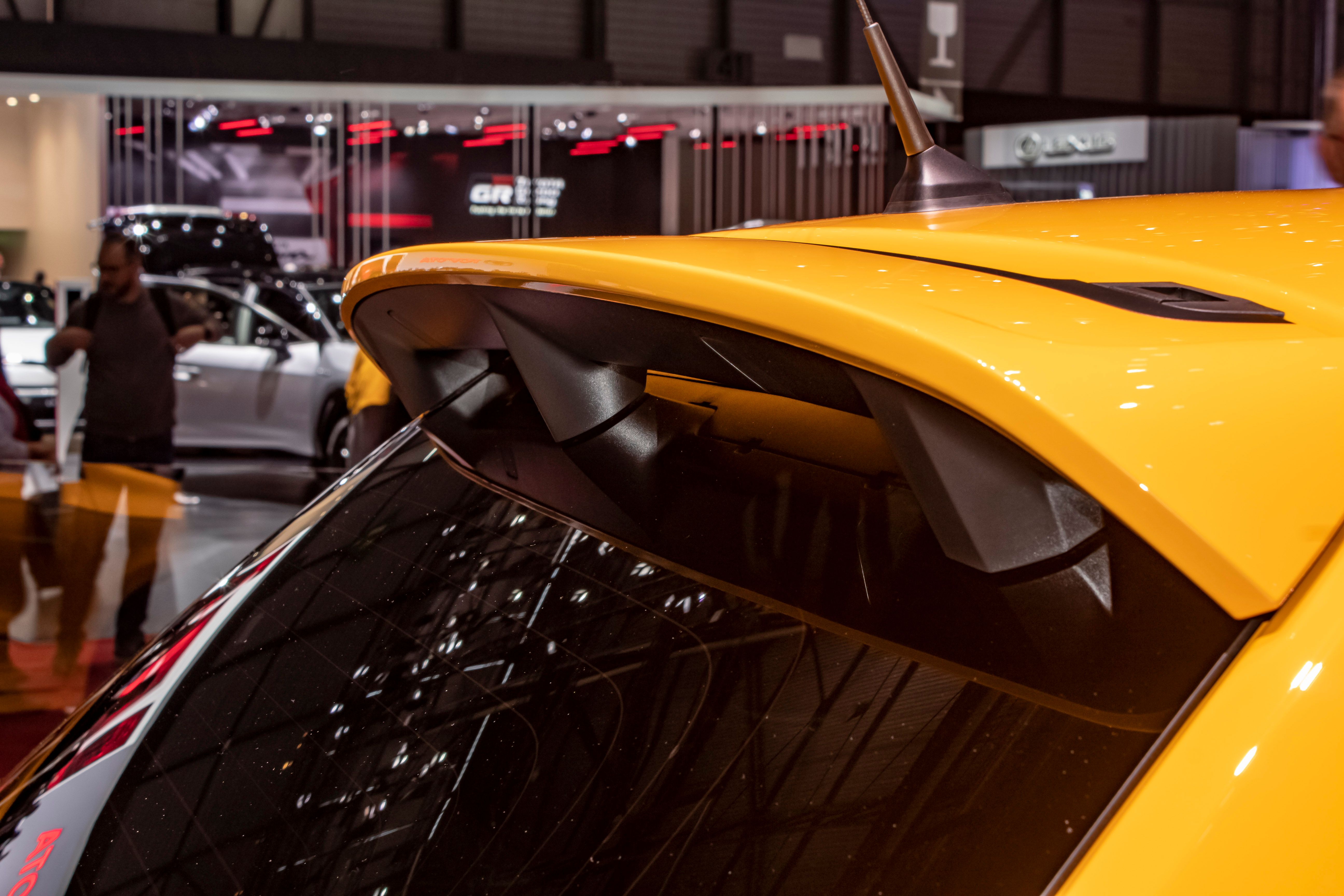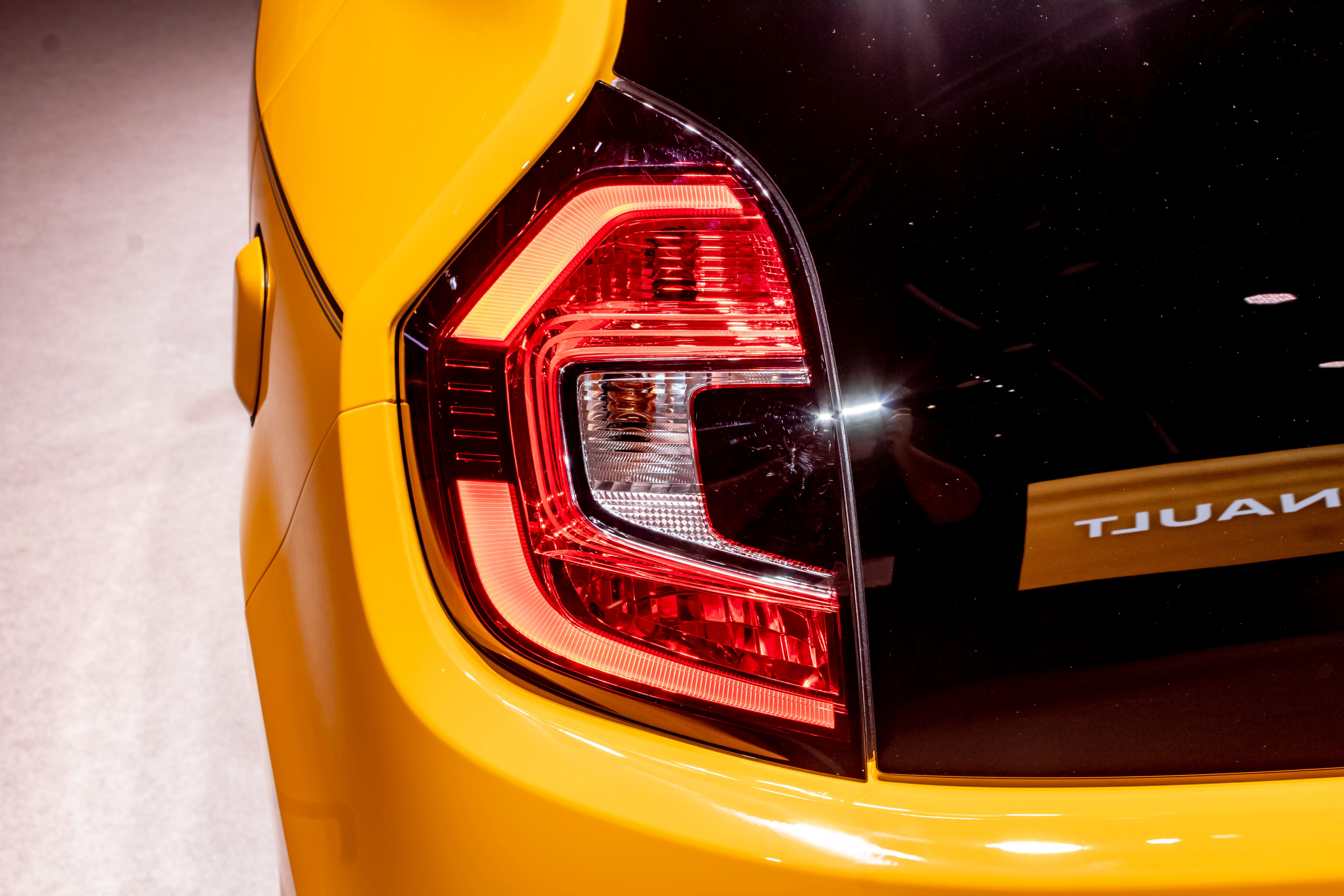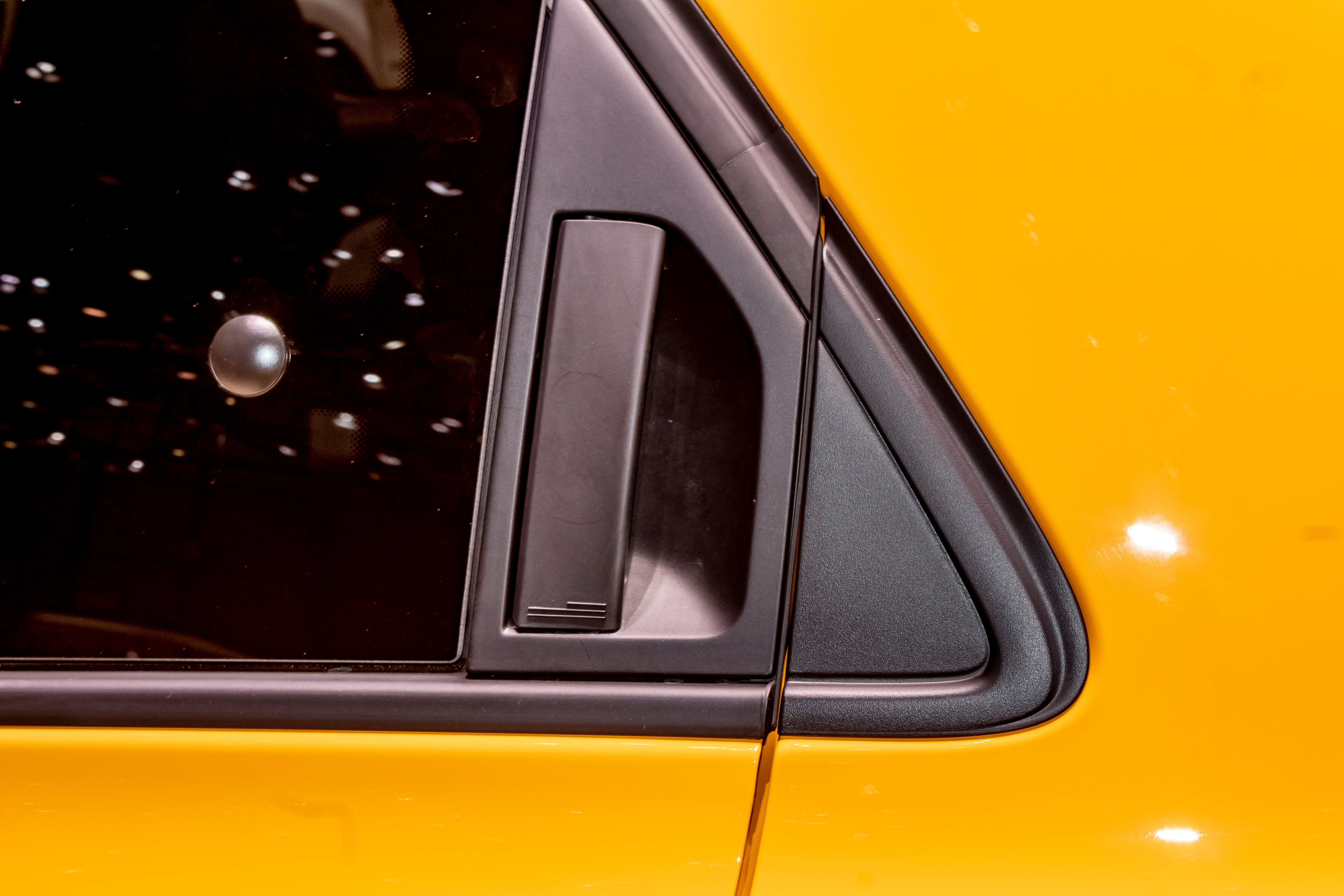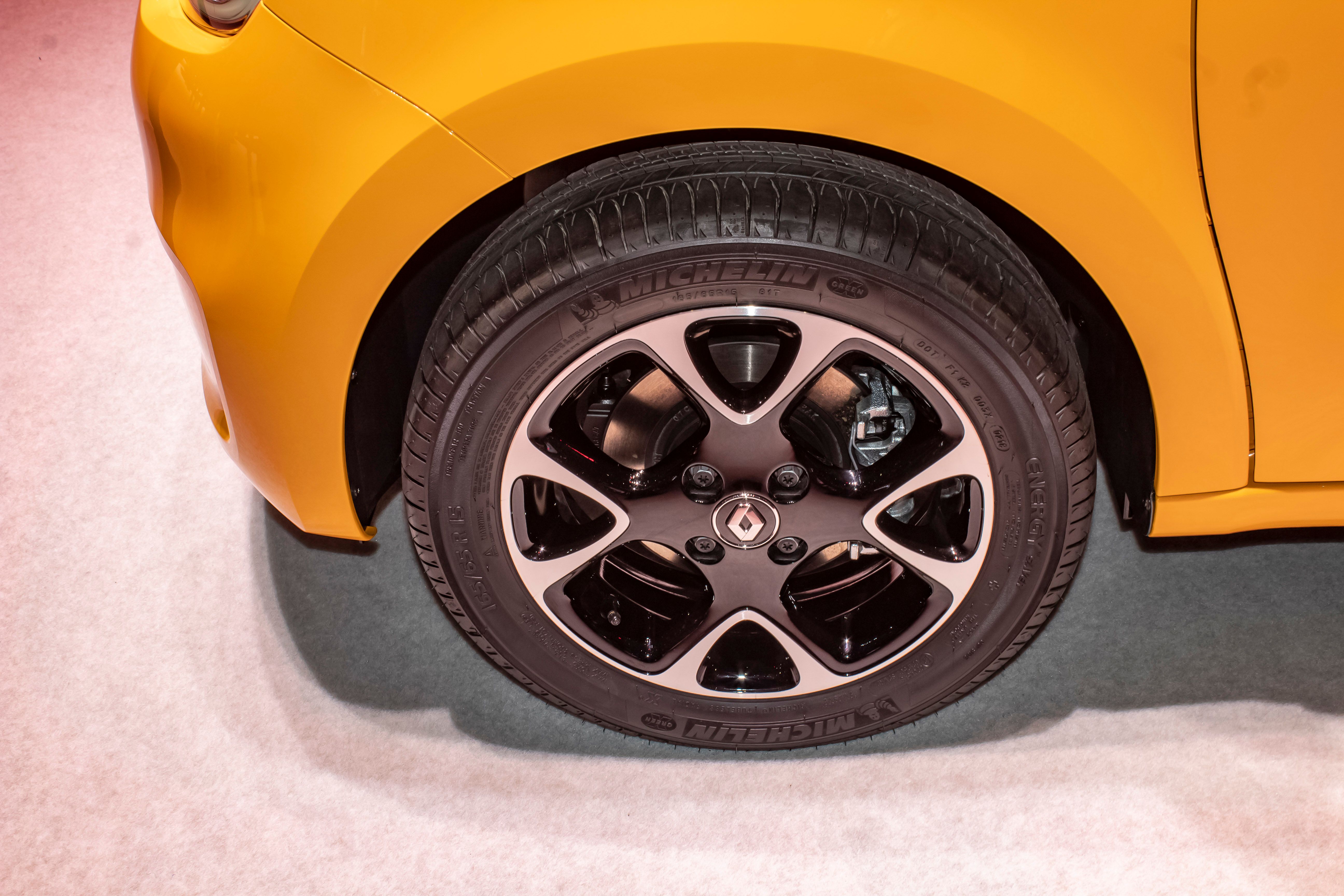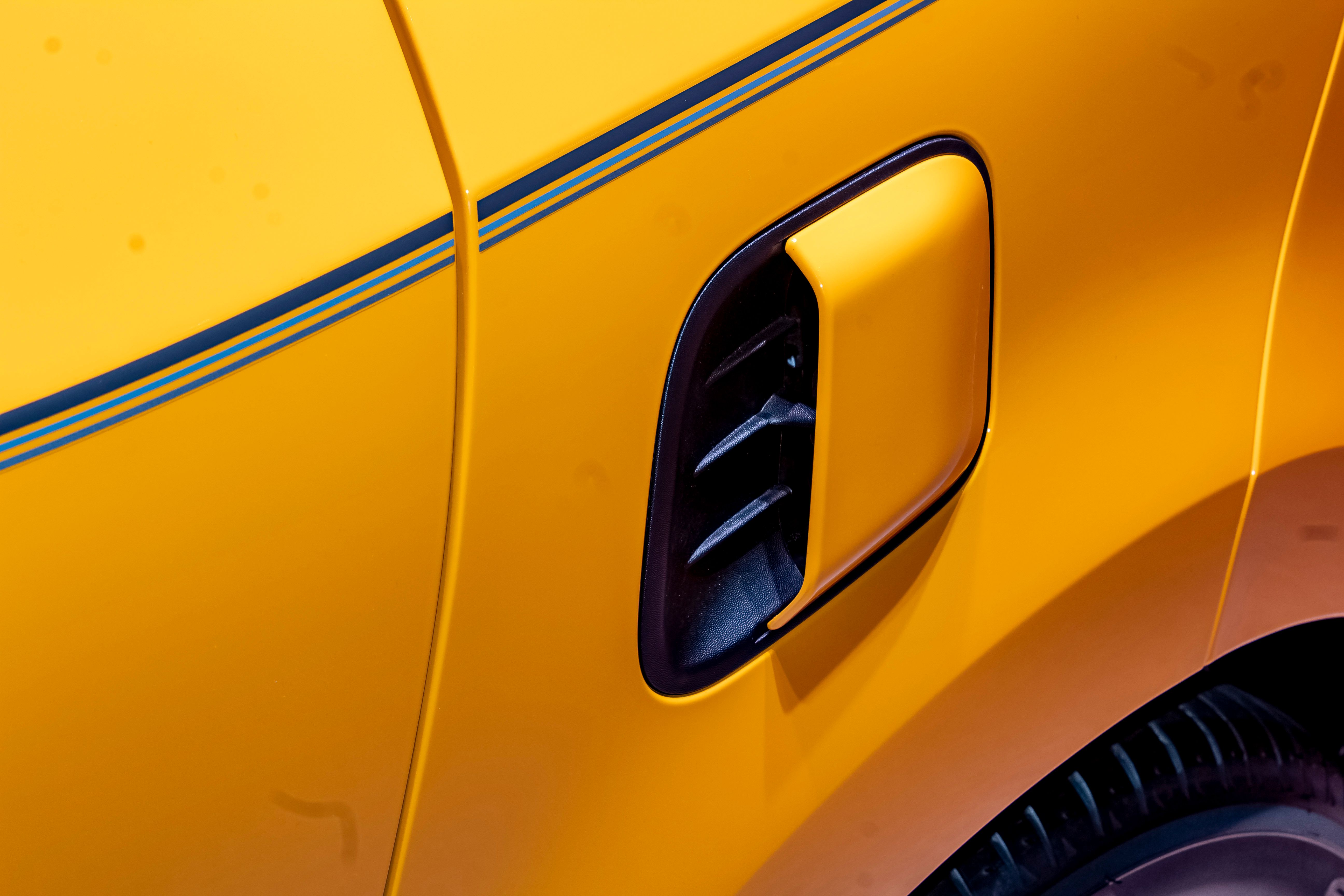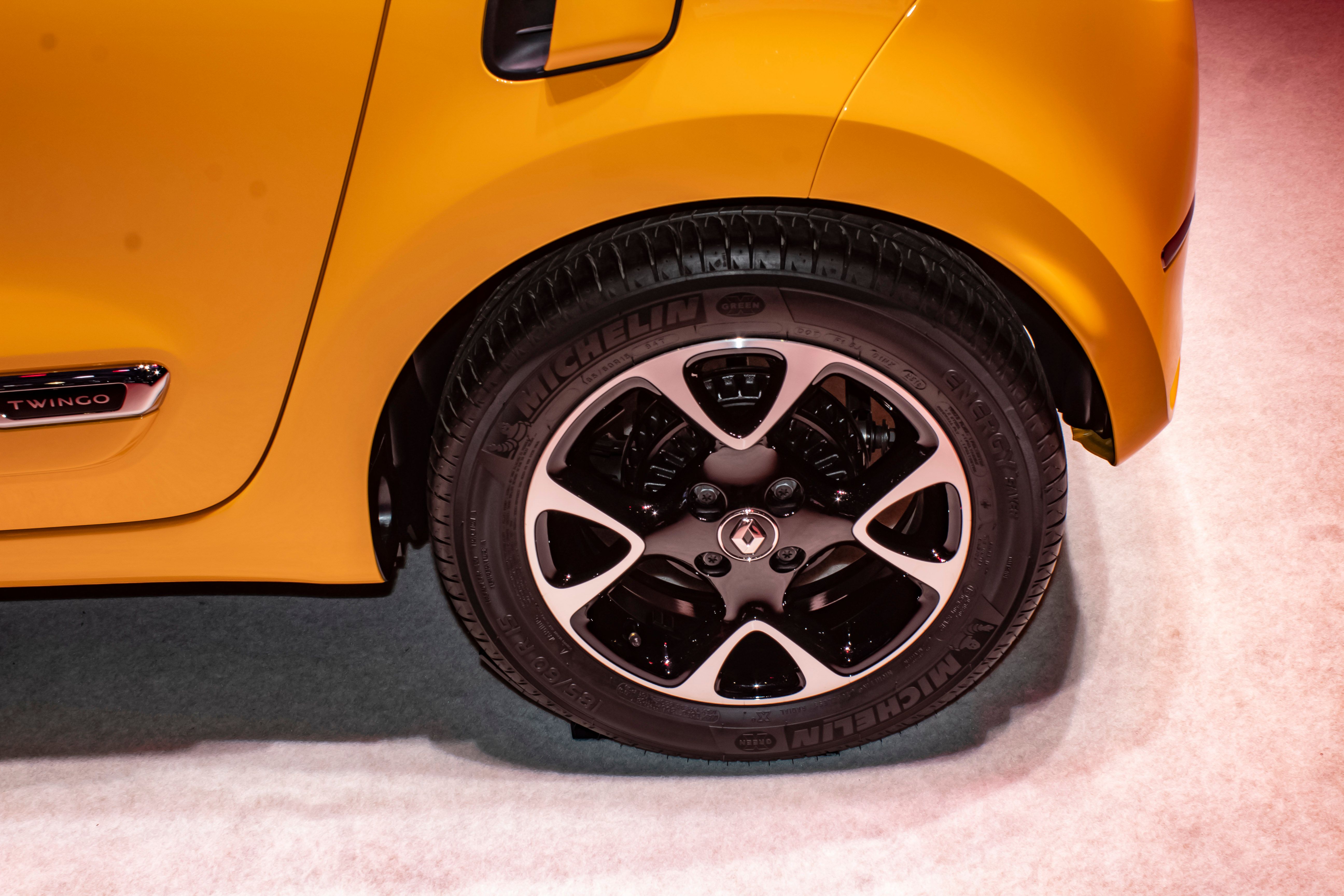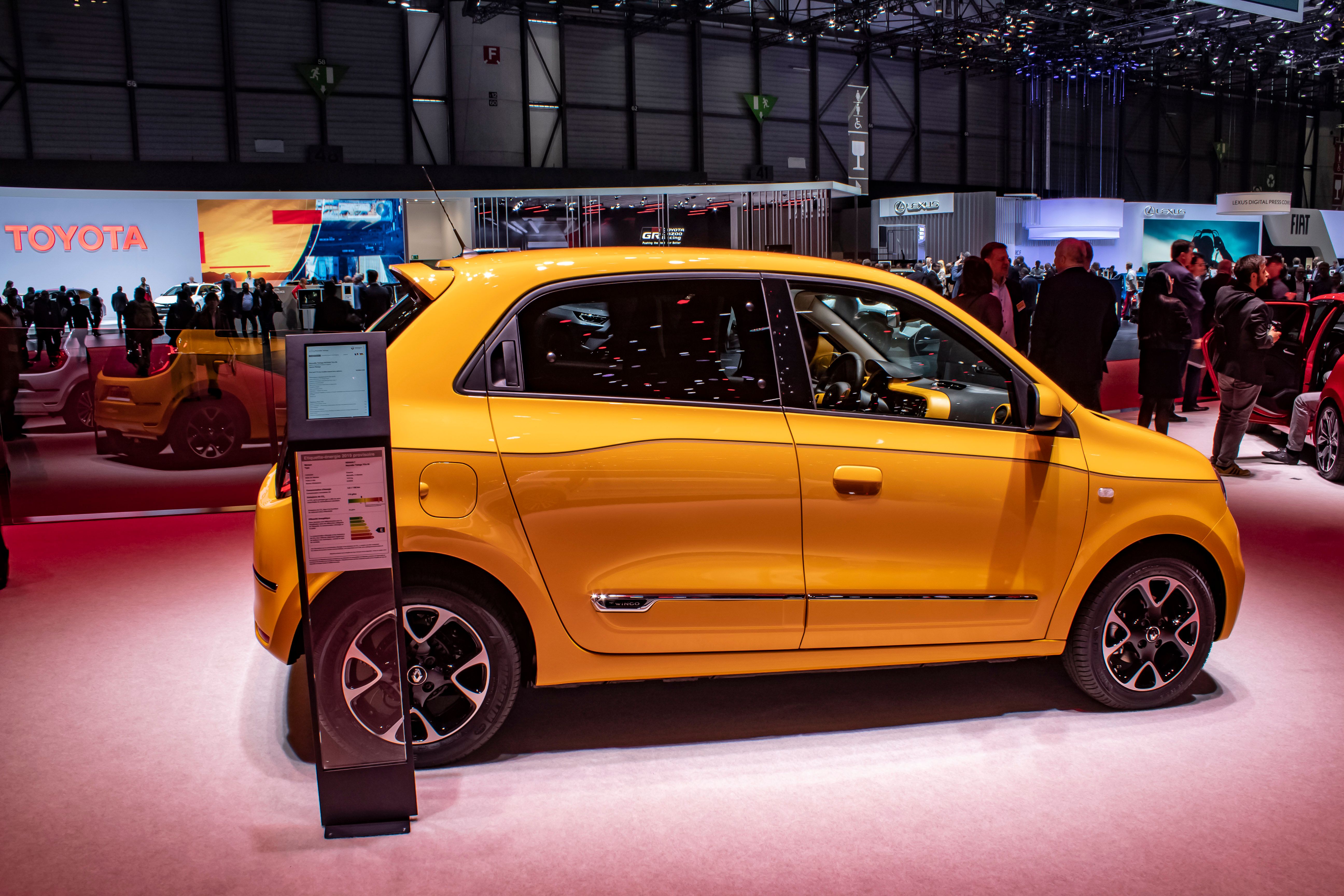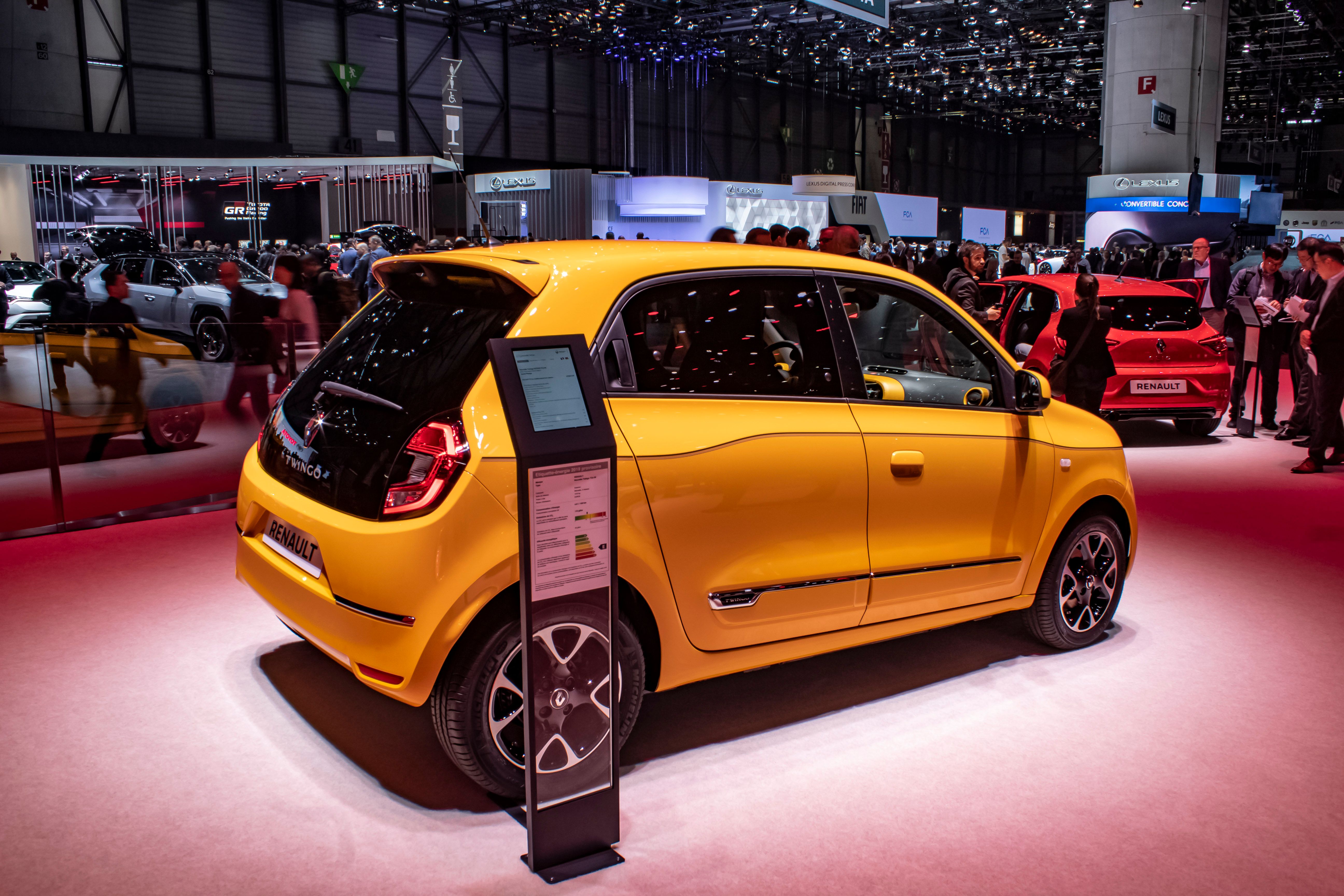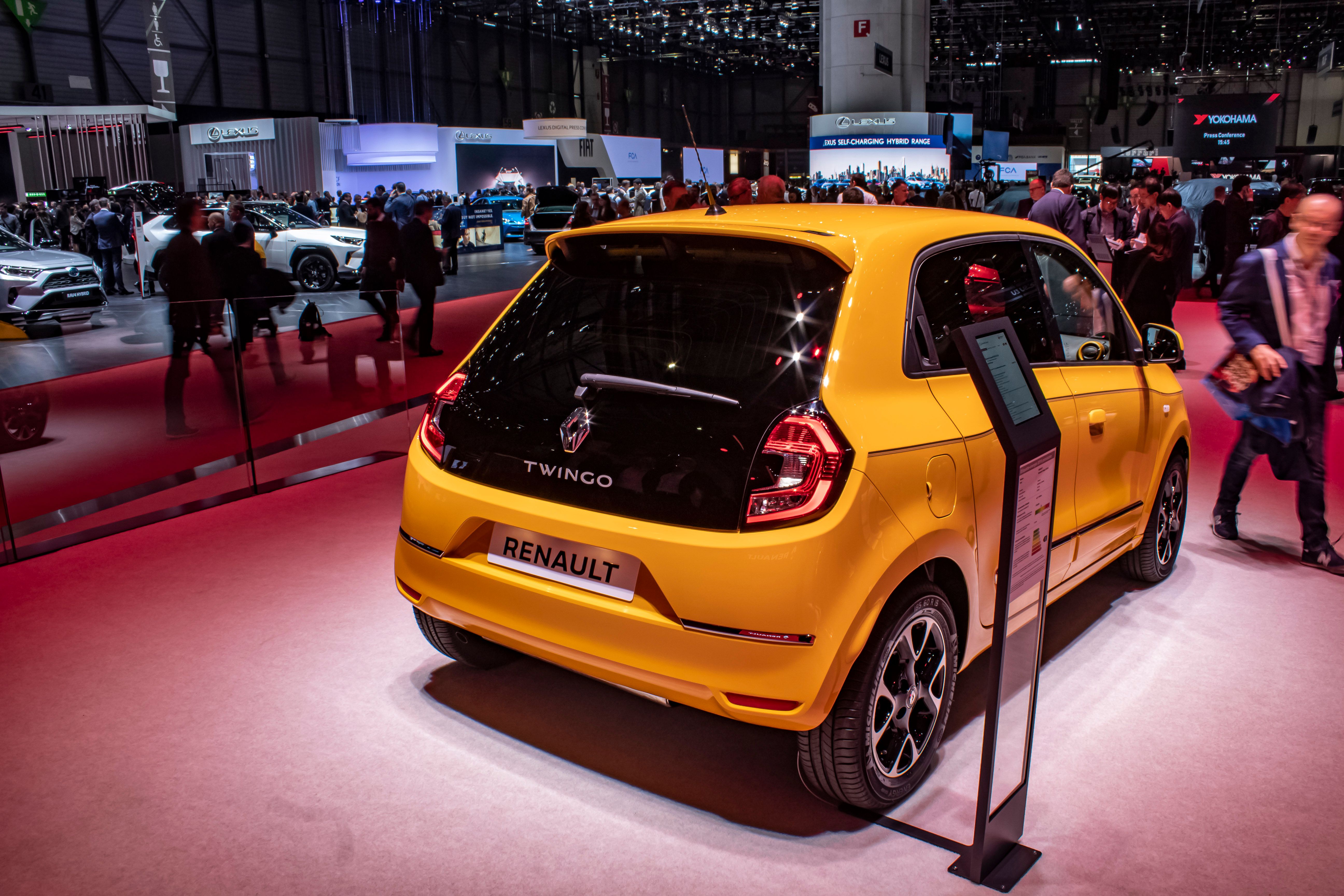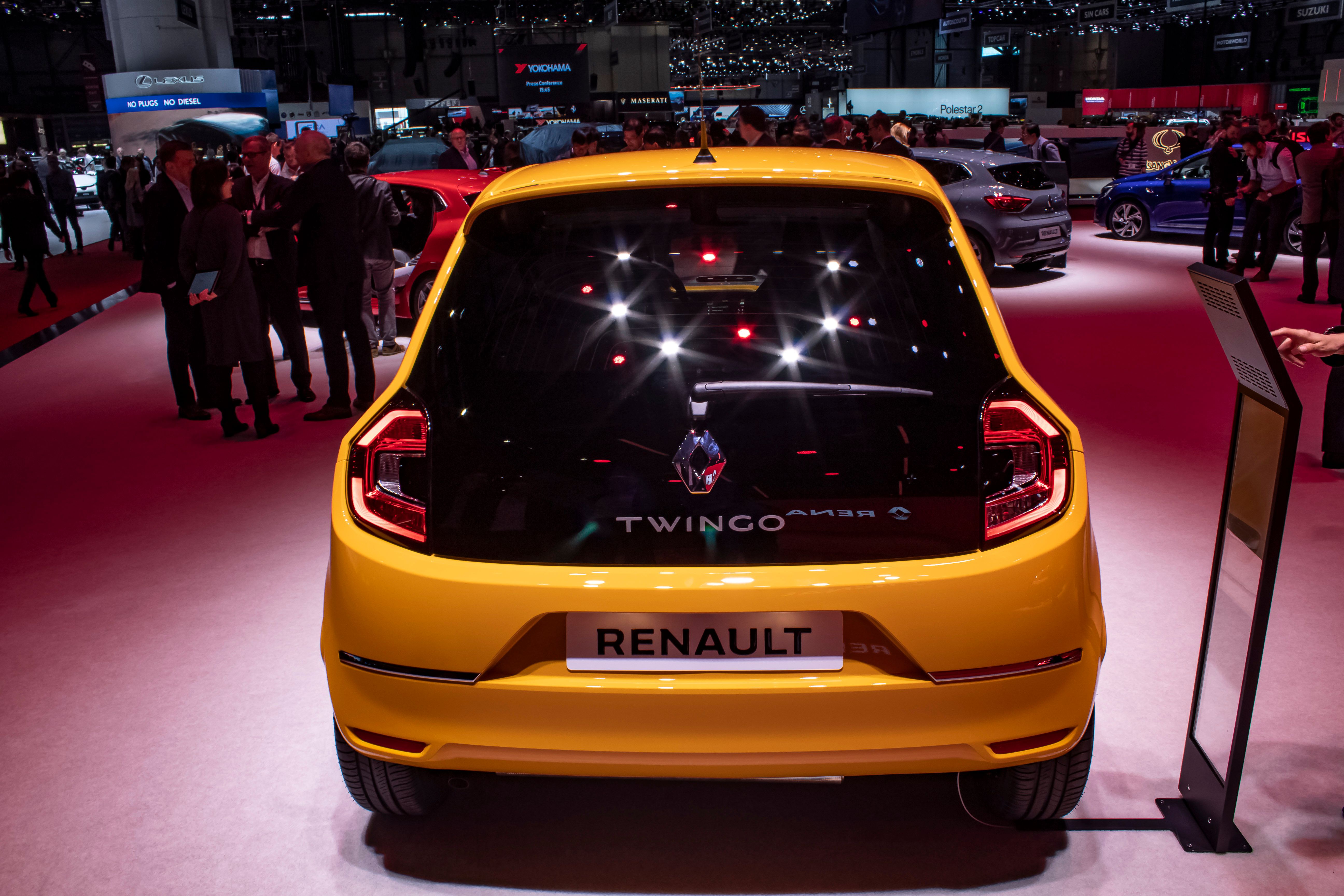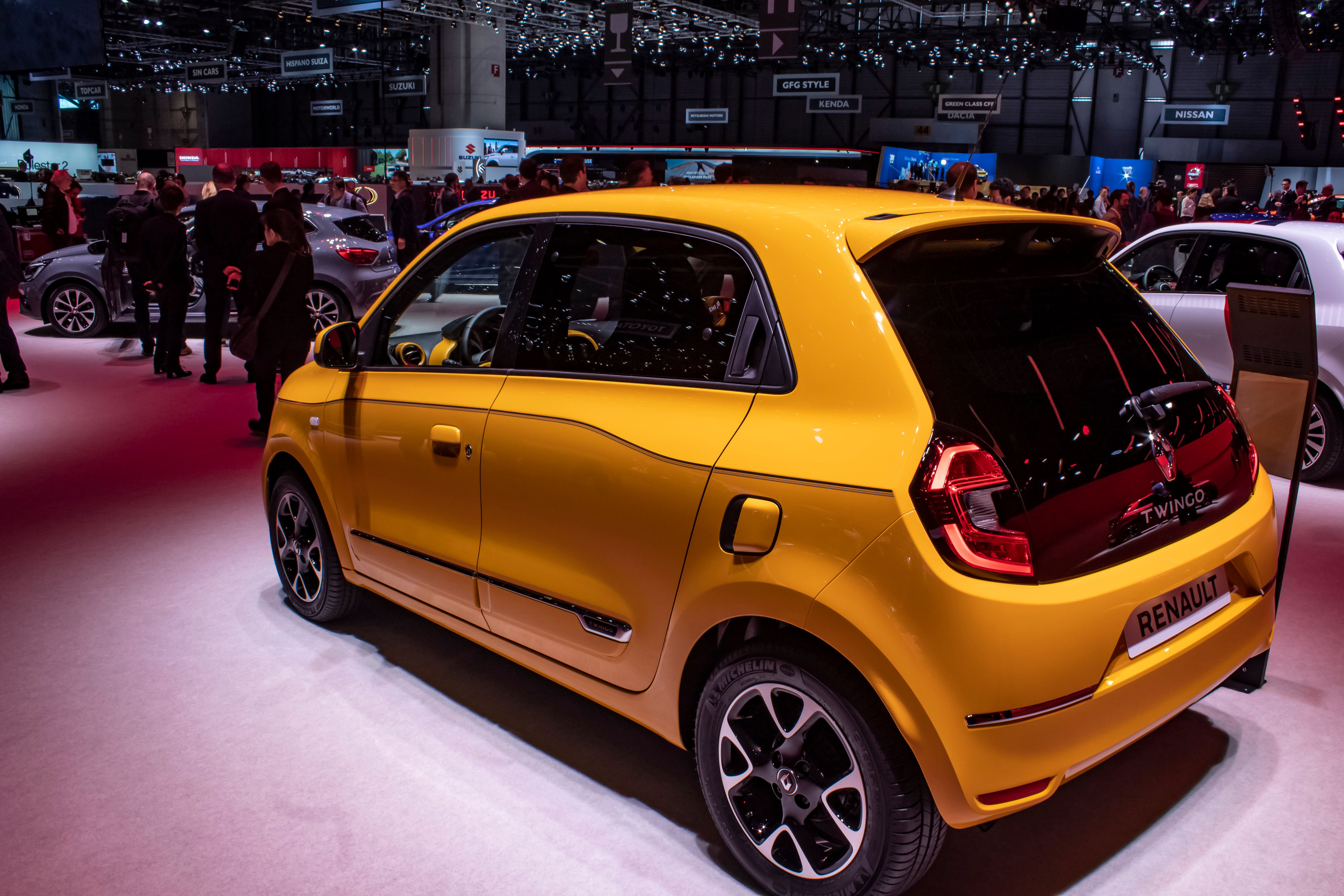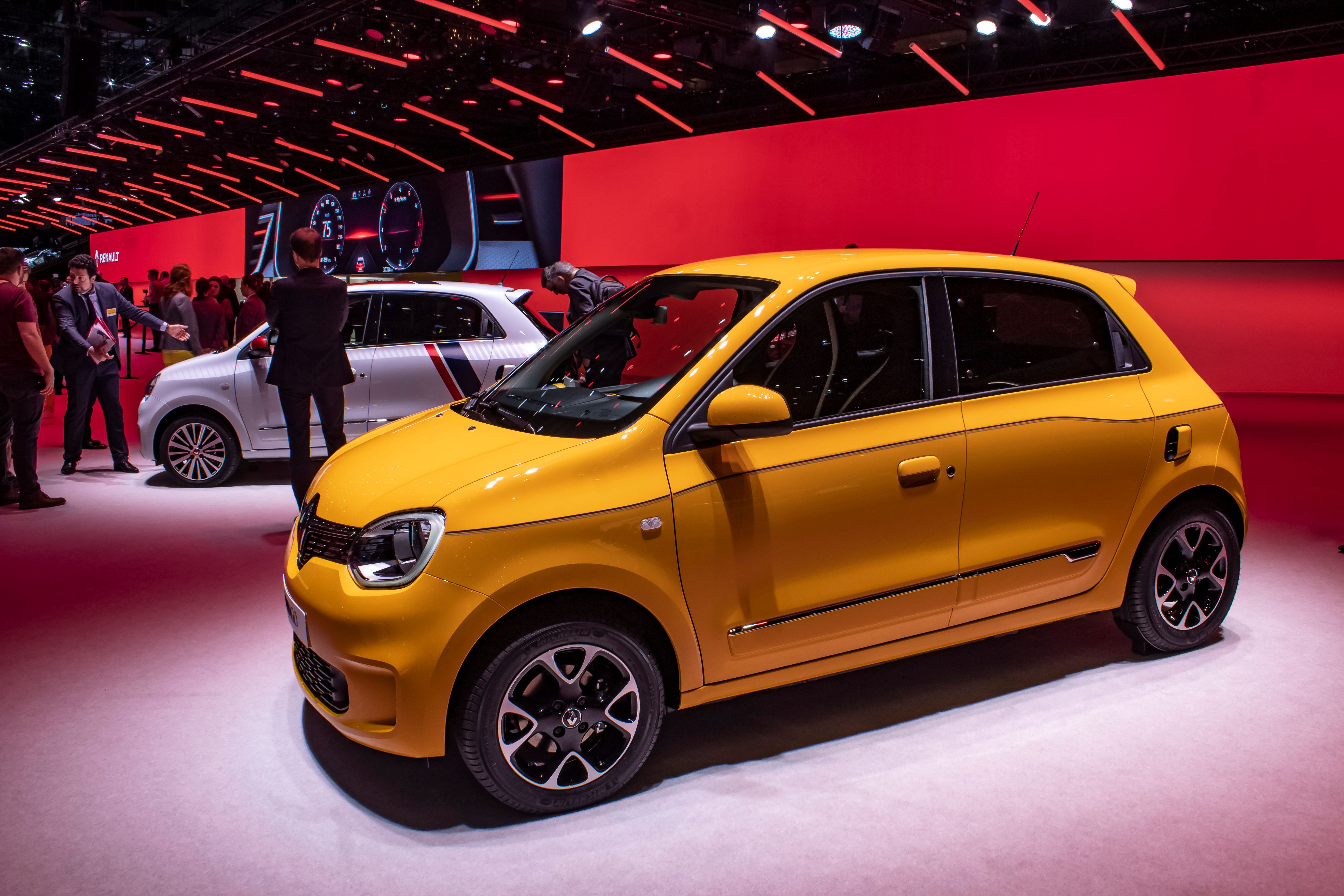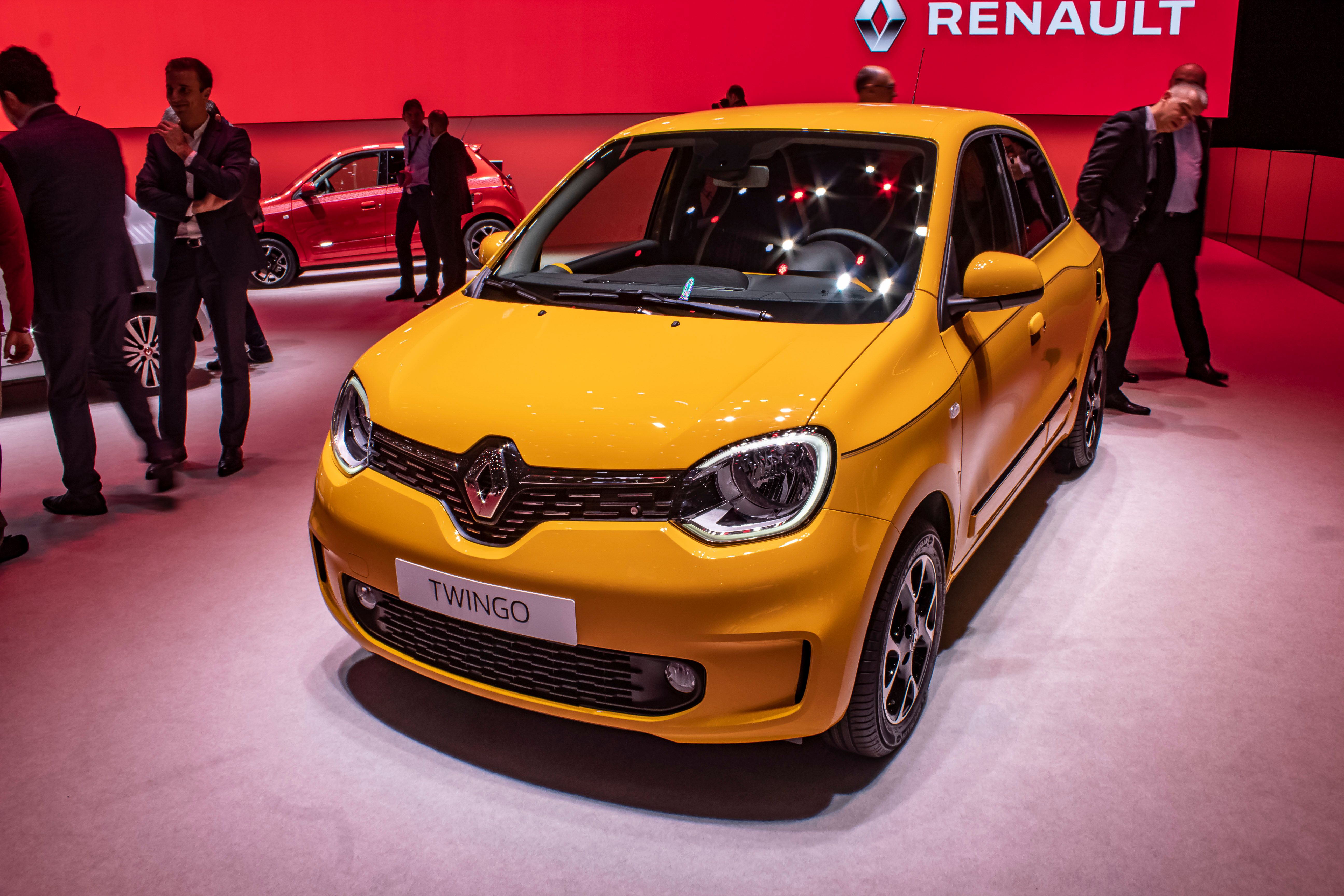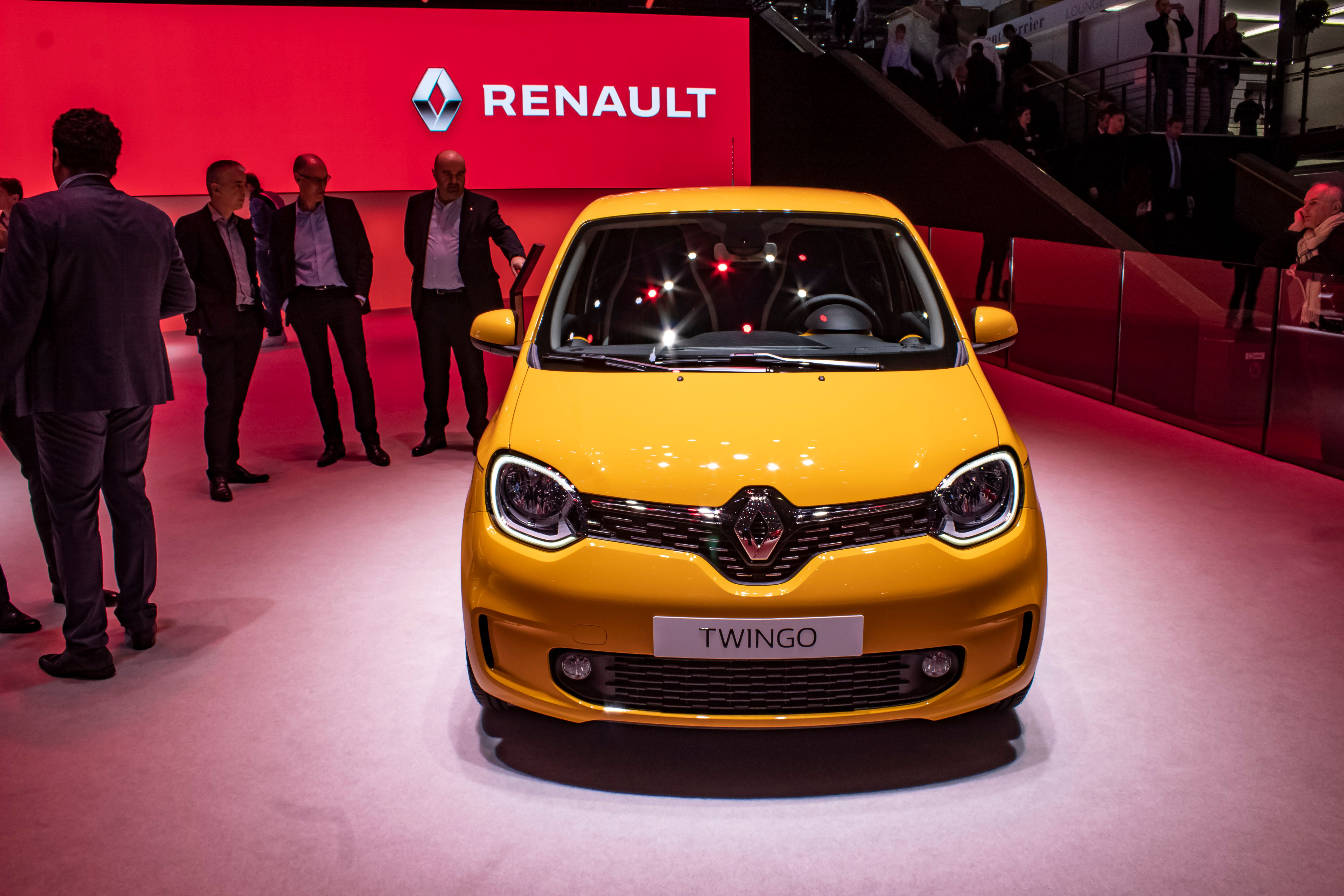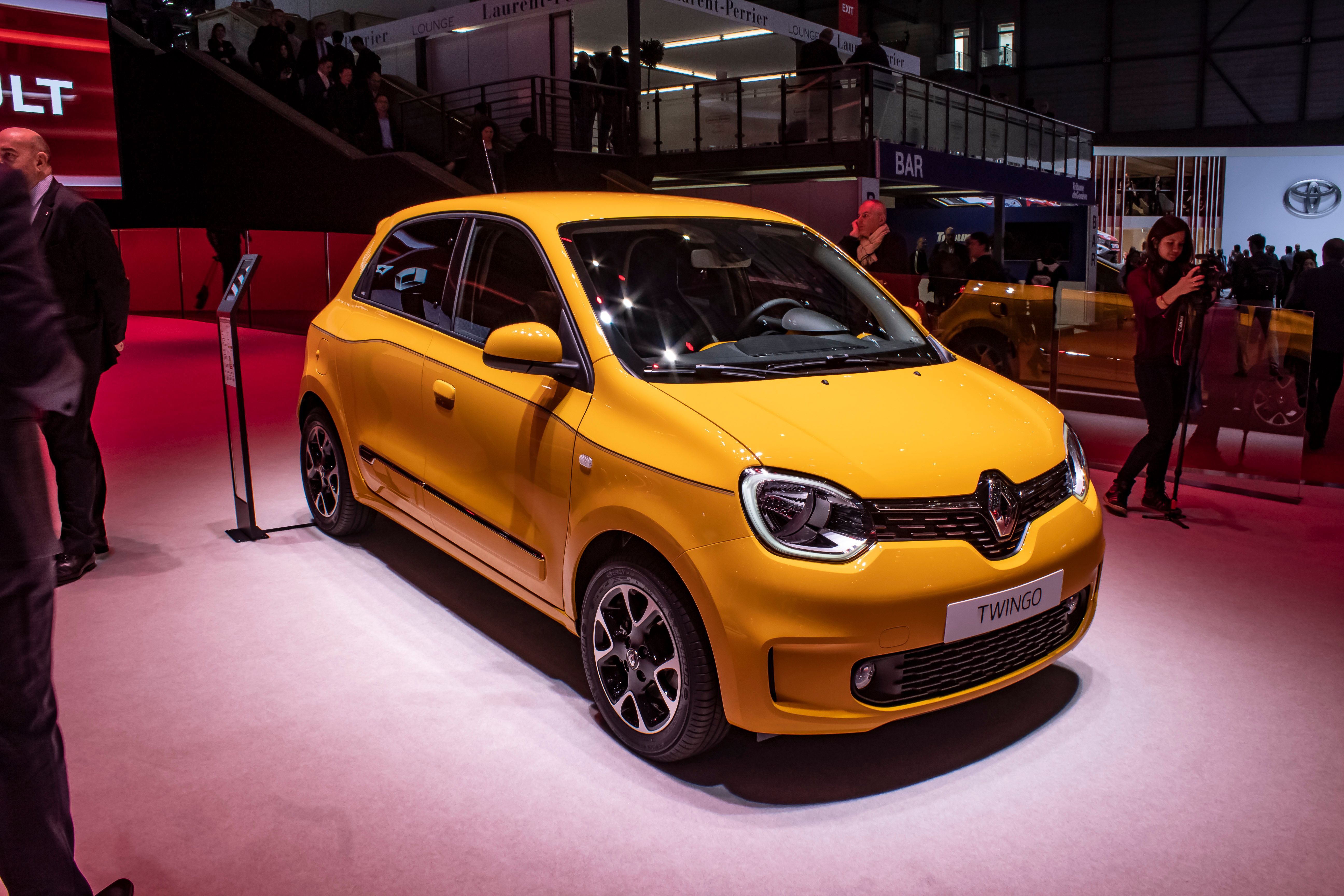Renault radically changed the formula for its third-generation Twingo city runabout. The first- and second-gen Twingos were front-engined, front-wheel drive, three-door cars (and the second one even had a proper hot hatch variant). For its third generation, though, Renault completely changed things around, making the Twingo a rear-engined, rear-wheel drive, five-door model.
Further differentiating it from its predecessors was its design. Whereas the two previous Twingo incarnations were styled to look as modern and fresh as possible, the current Twingo has a retro-inspired look that owes everything to the iconic Renault 5. And it really works - the Twingo is cute, tasteful and, even though there are other retro-inspired cars out there, it’s among the most successful from a visual standpoint.
But it too isn’t especially new, as it was launched back in 2015 and was recently given its mid-lifecycle refresh. Renault didn’t change anything major, though; the refresh has changed the front and rear bumpers, the headlights, as well as added some extra interior customization options. One of the engines available for the Twingo also gets a power boost courtesy of the facelift and some extra tech has been added too.
But overall, it’s still the same fresh looking car that attracted a lot of attention back when it was launched. That attention didn’t really translate into it becoming a sales hit, yet you still see a fair few of them scuttling around Europe’s major cities (the Fiat 500 is still king in this respect and the Twingo didn’t manage to dethrone it).
2019 Renault Twingo
- Make: Array
- Model: 2019 Renault Twingo
- Horsepower: 92
- Torque: 100
- [do not use] Vehicle Model: Array
Exterior
The Twingo’s front fascia (pre- or post-facelift) owes everything to the 1980s Renault 5. The shape of the headlights and grille is unapologetically inspired from the 1980s classic which has since become an automotive design icon (when it comes to small city cars from that era).
The new headlights now feature C-shaped LED daytime running lights that help the car in feeling fresh, but the old school halogen headlights don’t really help in this respect. Renault doesn’t offer any optional illumination upgrade for the Twingo, but if it did, it would probably make the entire front end look that much more modern.
From the side, you can really see just how short the Twingo’s overhangs are - they are ridiculously short, but they do mean the car is easy to place and maneuver in tight spaces. The wheels really do look like they are pushed as close to the corners of the car as possible and aside from the aforementioned maneuverability benefits, this also gives the Twingo a surprisingly butch and purposeful look - sure, it’s a baby (Renault), but it’s not the kind of baby that would sit idly by while you were taking its candy; it will put up a fight.
And while you wouldn’t know where its engine is just by looking at how the vehicle is proportioned (it really doesn’t look like a rear-engined car and I’m sure many people who are not in the know believe the same), it does have a dinky little side intake that feeds air into the engine. There’s just one, located on the left side of the car, right above the rear wheel; on the other side, Renault has placed the door that hides the fuel filler cap.
The rear is as successful as the front, in my view. It perfectly completes the look of the Twingo, and it genuinely emphasizes the fact that it is a rear-wheel-drive car. Its flanks are wide and the rear light clusters are drawn out towards the edges of the car in order to accentuate its width. I especially like the all-glass hatch that opens to reveal the (quite small) trunk area - it is practical and very good looking in my book.
What I especially like about the Twingo’s design is how clean and uncluttered it is. Many new cars’ design just looks very busy, with lots of swoops, curves and plenty of fake vents. The pre-facelift version of the Twingo had no fake vents whatsoever, and even if the post-facelift model does have two of them (on the new front bumper), they’re a lot less offensive than what other manufacturers are doing these days. It’s just a very pure looking little car with bags of visual appeal and plenty of charm.
Interior
Don’t expect the Renault Twingo’s interior to feel premium or upmarket in any way - it doesn’t. But don’t jump to conclusions that this is in any way a bad thing - in an age when everything is being sold as premium (or aspiring to be premium), the simple and functional Twingo interior is a breath of fresh air.
It all works together, though, and while it does feel cheap in terms of materials quality, it’s decently screwed together and feels surprisingly solid. It’s perhaps not as substantial feeling as you’d like if you’ve moved to it from a larger car, but you won’t feel like you’re in a portable toilet either.
The main design feature of the dashboard is a big C-shaped element that surrounds the infotainment screen (or the standard audio system that actually comes with a phone holder that through an app gains pretty much the same functionality as the factory screen, but with better touch response). Some may think that by offering a phone holder Renault cheaped out, but if you’d actually try it, you’d see it actually makes a lot of sense and it works very well - plus, it’s the only way you can see a rev counter or engine temperature.
Renault gave the Twingo new gear selector knobs for both the manual and the automatic gearbox versions of the vehicle. These new knobs look and feel much more premium and they were actually not very nice in the pre-facelift Twingo; they are also something you touch very frequently and they need to feel good too.
Also new for the facelifted Twingo is a closed glove compartment on all versions. This was an optional feature before, believe it or not, but now Renault has decided to offer it as standard across the Twingo range. Along with this, the automaker says it has “redesigned and reinforced” the rear parcel shelf, a piece that looked quite nasty before and it started to bend quite severely if you put anything even remotely heavy on it.
One gripe Renault’s engineers couldn’t have fixed (and didn’t) is how high you sit in the Twingo. Sure, there are plenty of cars out there where you feel like you’re sitting just that little bit higher than you’d like, but the Twingo is different. You still get that feeling of loftiness, but the floor is surprisingly high too.
Basically, you feel like you’re sitting high in the car, but at the same time your knees are pushed up more than you’d expect. It’s as if the floor itself is very thick, similarly to what you might experience in an electric car whose floor space is taken up by a big battery pack.
And this obviously doesn’t help the driving position. It doesn’t really feel sporty at all to be behind the wheel of the Twingo. You feel like you’re in some sort of crossover, but a rakish crossover that sacrifices outward visibility for style. Rear visibility is rather poor in the Twingo - this is caused by the fact that the rear side windows (that pop out, not roll down) have thick black bezels around them, as does the rear screen.
And whereas the previous-generation Clio had individual sliding rear seats, which either allowed for increased legroom or freed up space in the trunk for cargo, the new one doesn’t have this feature. But since its passenger compartment is comparably large (for its size/wheelbase), it’s actually not that cramped inside, and since it has two extra doors compared to the outgoing model, it’s now more practical.
Speaking of practicality, the Twingo’s trunk is small, even by class standards. This is due to the fact that the cargo area is actually above the engine (which, by the way, is quite difficult to access). Renault quotes its maximum load volume at just 174 liters (low even by class standards), although it can be extended to a much more reasonable 980 liters with the rear bench backrest folded. And since the engine is under the trunk floor, it is raised quite high, so at lest you get a nice flat cargo area.
Drivetrain
If you can’t be bothered to row your own, Renault does offer a self shifter, in the form of its six-speed EDC dual-clutch transmission. It can only be had on the top of the range TCe 95 engine, a 0.9-liter turbocharged three-pot with 92 horsepower and 135 Nm (100 pound-feet) of torque. Should you not want the optional automatic, this power plant is available with the same five-speed manual as the non-turbo SCe mills.
None of the engines that motivate the Twingo make the car especially enthralling, neither in terms of sound/feel nor in terms of actual performance.
Since the Twingo is quite tall, it also gets blown around by gusts of wind and while it doesn’t feel top-heavy through the corners, it’s not the most thrilling car to drive fast. And this brings us on to its driving dynamics...
In case you were thinking Renault chose a rear-engined, rear-wheel drive chassis layout for the Twingo in order to make it fun to drive, you’d actually be wrong. This was by no means a prime concern, and Renault actually went down this route because it has a partnership with Mercedes and the current Twingo was developed alongside the latest generation of Smart vehicles.
Throw it into a corner at higher speeds, and it is more likely to understeer than oversteer. And even in those instances when the back feels like it’s going to come around, its aggressive electronic traction and stability control systems wring it back in line. On top of this, you can’t disable the nannies, so if you were planning on using your Twingo as a mini drift machine, you’d better look at another vehicle (one whose systems can be disabled).
Where the Twingo really shines is scurrying through city traffic. It is quite a narrow car (just 1,647 millimeters / 64.9 inches wide) and when you also factor in its ridiculously tight turning circle, you realize just how good it can be in the urban environment. It also launches itself off the line quite briskly, because being a rear-engined, rear-wheel-drive car, when you accelerate hard from standstill, the car does not lose traction at all.
Pricing
In its native France, the Twingo is available from €11,400. For this you get the car in base Life trim, but it’s rather poorly equipped and you’re going to want to step up to the Zen trim. It starts from €13,500 and it adds the smartphone compatibility (as well as the dashboard holder), the better climate control system and electric, heated side mirrors.
The Twingo looks its best in top Intens trim, available from €14,700. It swaps out the standard front grille for a fancier looking one with chrome accents, 15-inch alloy wheels, as well as tinted rear glass. Inside, the trim adds a height-adjustable driver’s seat, leather-wrapped steering wheel, the Easy Link 7-inch infotainment (that’s Apple CarPlay- and Android Auto-compatible), a different design to the center console, a 50/50 split-folding rear bench, cruise control and automatic headlights. Oh, and if you want the EDC dual-clutch automatic gearbox, then that adds another €1,200 to the base price without any additional options.
Competition
Peugeot 108
Peugeot’s second-generation 108 city car has a lot going for it. It’s quite eye catching, particularly in some of the higher trim levels, it is spacious inside for what it is and it’s actually not that bad to drive. In fact, it might even be more fun to drive than the Twingo, helped in part by the lower and slightly sportier feeling driving position. It’s not known for being especially comfortable, though, nor is it particularly refined - in this respect, the fact that the Twingo has its engine in the back really helps improve refinement; you hardly hear the rear-mounted engine from either of the two front seats.
Hyundai i10
Hyundai just revealed an all-new (third-gen) i10 city car and it is the boldest one yet. It has cute styling, an interior that looks higher class than anything rivals can muster, and plenty of kit (both standard and optional). There’s even a sporty N-Line model that isn’t just a stickers and sunroof edition - it has a unique (more powerful) 1.0-liter turbo engine with 98 horsepower and a sporty twist to its steering and suspension setups - if what you’re looking for in your city car is sportiness, then the i10 in general and the i10 N-Line in particular is probably your best bet.
Read our full review on the Hyundai i10
Fiat 500
Since the Renault Twingo is a city car with retro styling, it can’t not be compared to the Fiat 500. Design is a hugely important criteria in this segment, and while the Twingo does feel fresher and more purposeful in its aesthetic, the decade-old 500 just has more charm and appeal, even if it lacks some of the Renault’s practicality. And the same can be said of the two cars’ interiors - the Fiat’s just makes you feel that little bit more special, even if the car you’re in is not a top trim level model. The 500 drives well enough to be on par with the Twingo, and I’m pretty sure it’s stealing a lot of its (sales) thunder.
Read our full review on the 2019 Fiat 500
Final Thoughts
While the Renault Twingo has a lot of charm and it’s genuinely a likeable car, there’s a reason why it’s not more popular than it currently is. Rivals just do things better and it doesn’t use its unique platform to its advantage in order to, say, offer enthusiast-pleasing fun driving dynamics. It’s average to drive, it’s average in terms of practicality, average in terms of performance and many people say they’re having trouble even coming close to the manufacturer efficiency numbers.
The car is addressed at style conscious buyers who appreciate its Renault 5-inspired look, its connectivity options and the fact that it is super-maneuverable in the city - it has to be one of the easiest cars to park available right now, especially if you get a higher-spec model with the reversing camera.
As a practical proposition it’s not bad, but it’s just not sufficiently good enough to win over fans. I’m sure many people went to test drive it when it came out, nearly certain they were going to buy one, but after getting behind the wheel (and finding out things such as the fact that the front compartment cannot be used for carrying cargo, even though there’s nothing really there), they were put off by it.
It certainly feels like this new Twingo is less popular overall than the second-gen model it replaced. That car was a conventional three-door city car, but it was actually a bit of fun to drive, regardless of version, and there was even a proper RenaultSport model for those looking for sporty thrills. On top of that, the second-gen Twingo had that clever sliding rear bench that made it genuinely good at carrying two full-sized adults in the back.
The current Twingo is a unique proposition, and arguably better looking than the mechanically-related Smart ForFour (both inside and out), but the fact that it’s not as good as it could have been is definitely annoying (and a bit off-putting). People were expecting a lot (I think especially in terms of driving dynamics) and because it didn’t quite deliver, it quickly fell out of favor.
And the sales figures don’t lie. In the best year for the first-gen Twingo, it managed to sell 208,584 units, while the second-gen model’s is 174,409 units. The current Twingo sold best in its first year (2015) when it managed to shift 95,808 examples, but has remained under the 90,000 annual sales mark since.
It’s definitely an interesting car, but you have to really-really like the way it looks in order to buy it over one of its highly (and numerous) rivals.
Further reading
Read our full review on the 2017 Renault Twingo GT.

